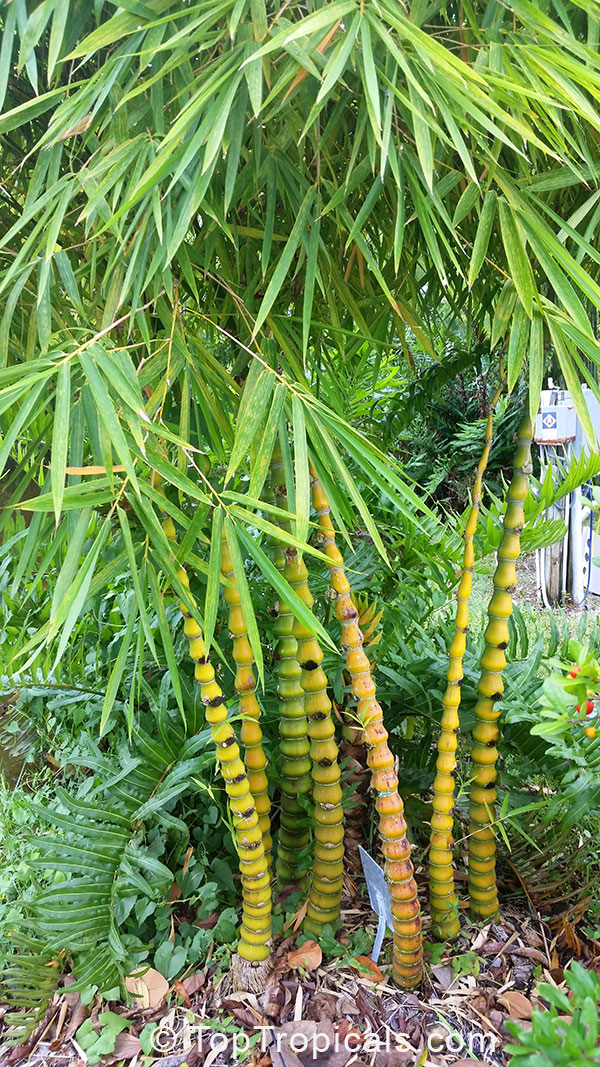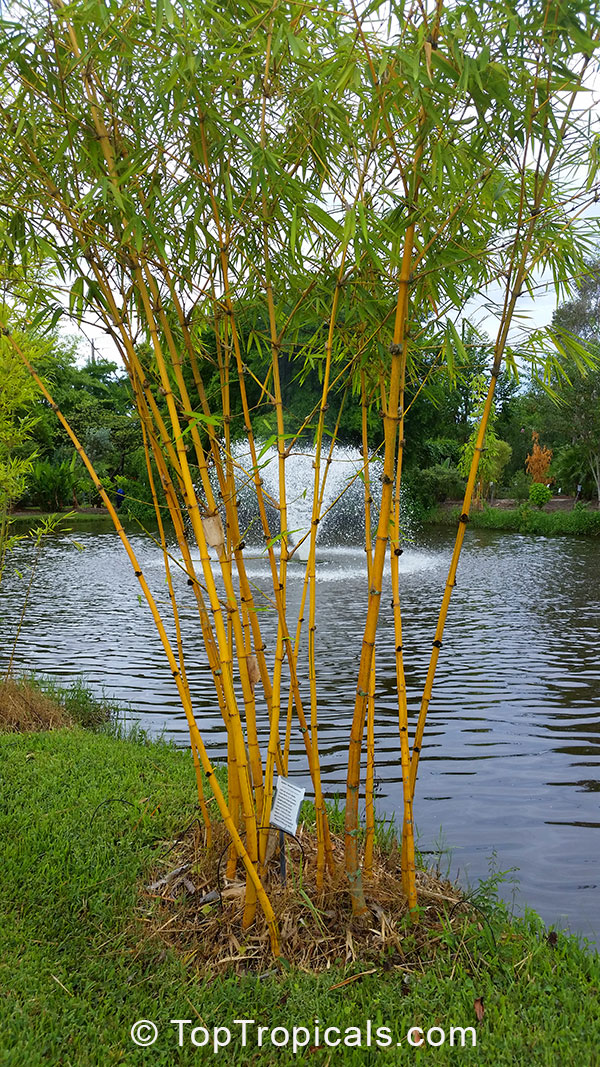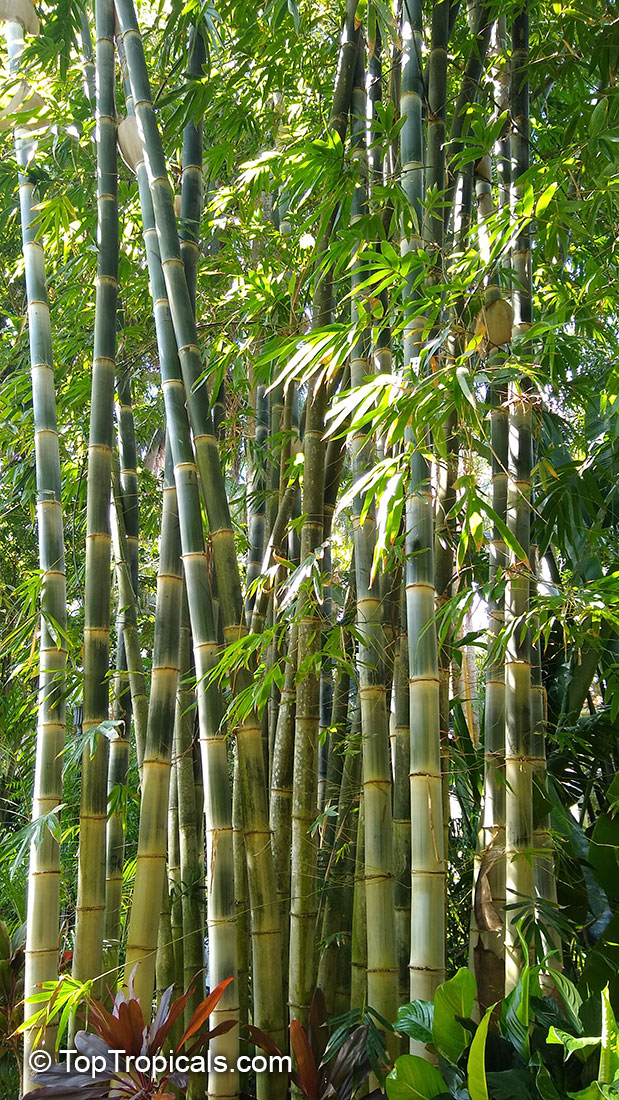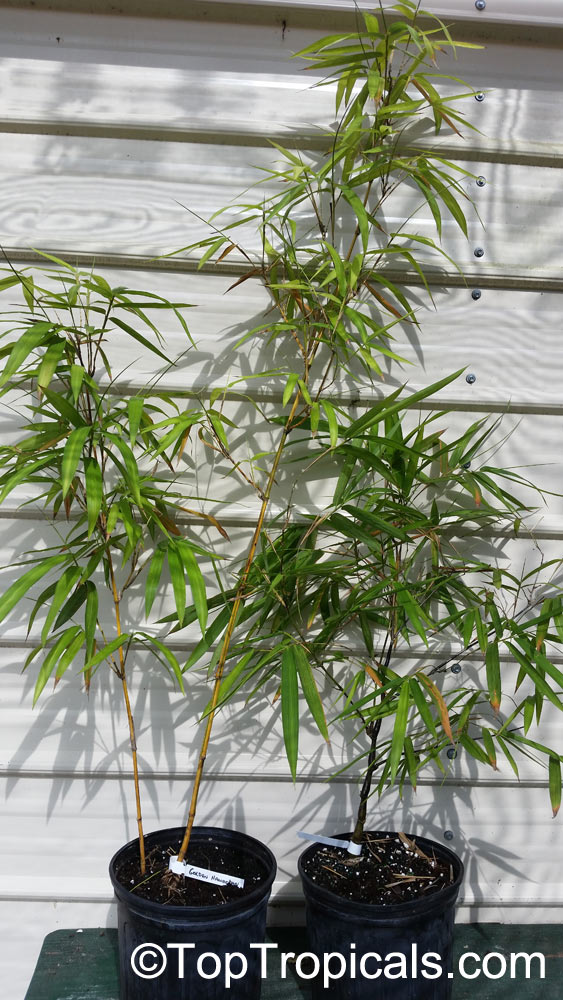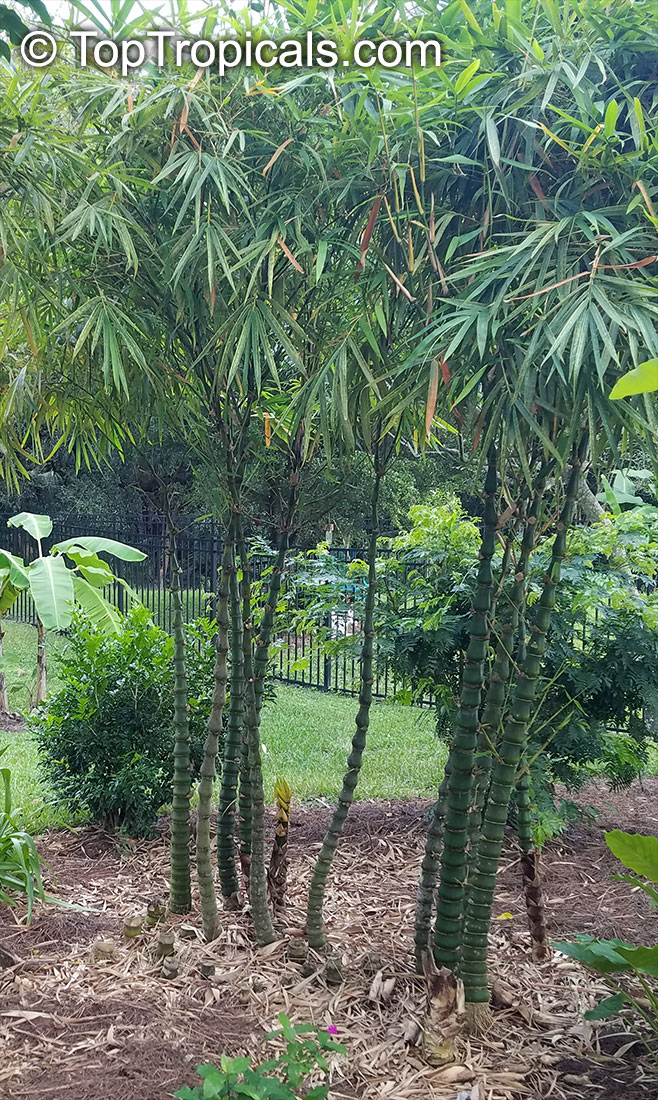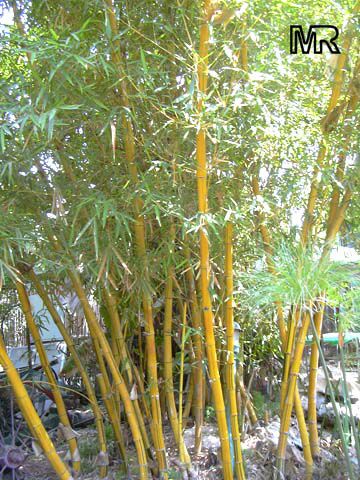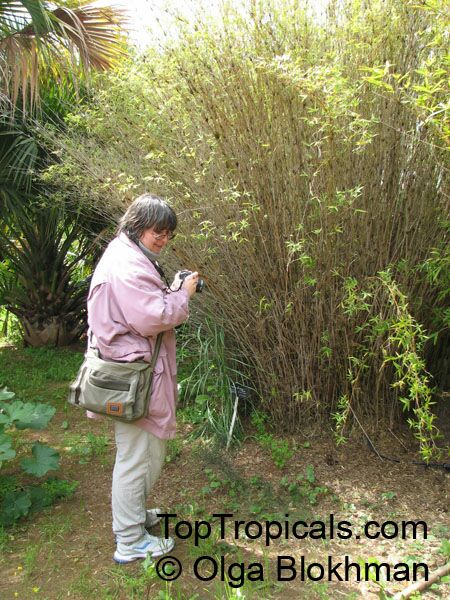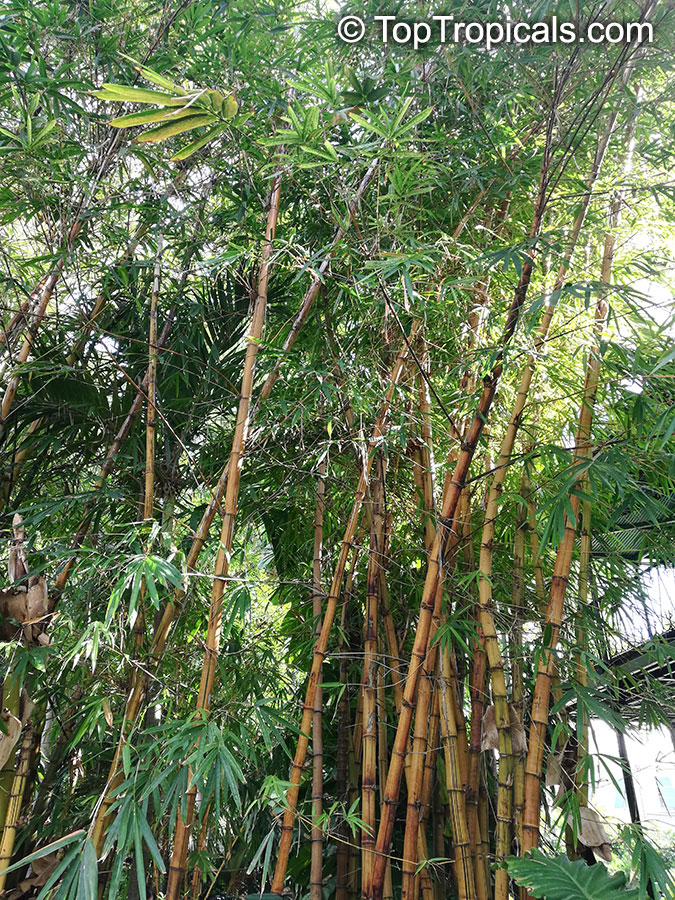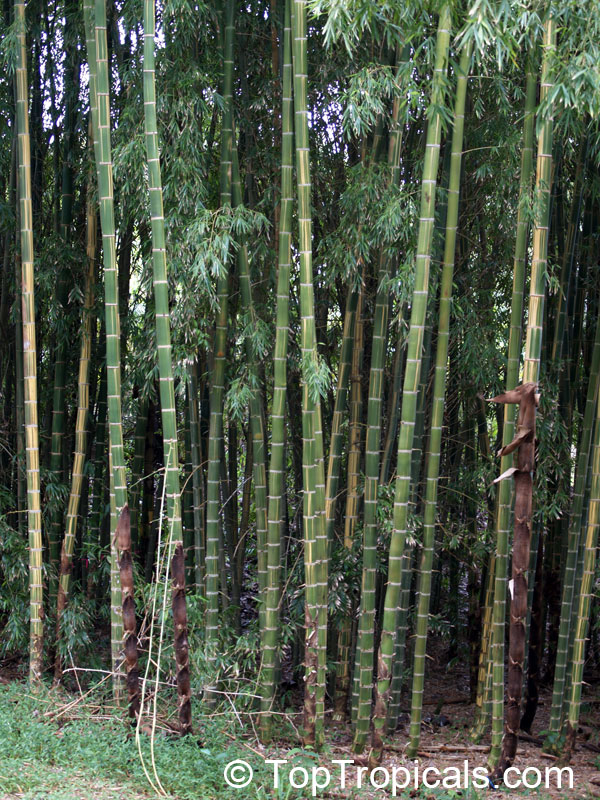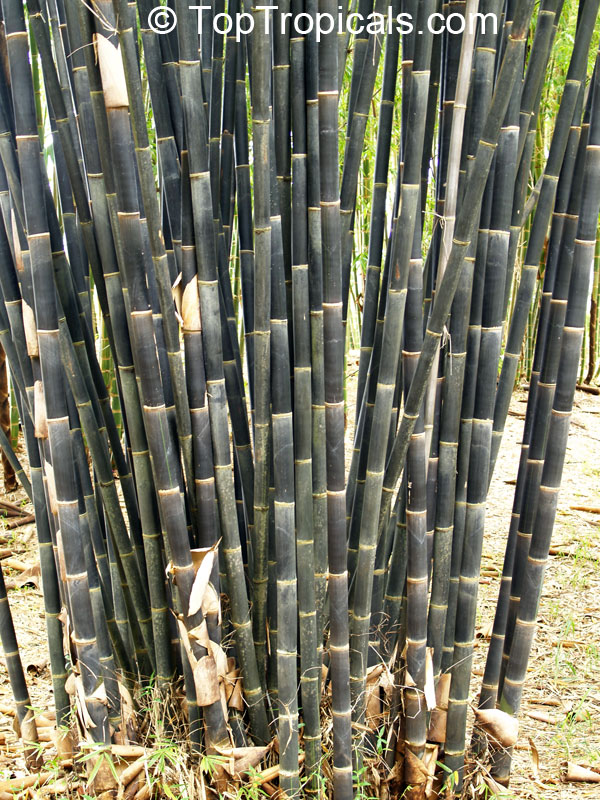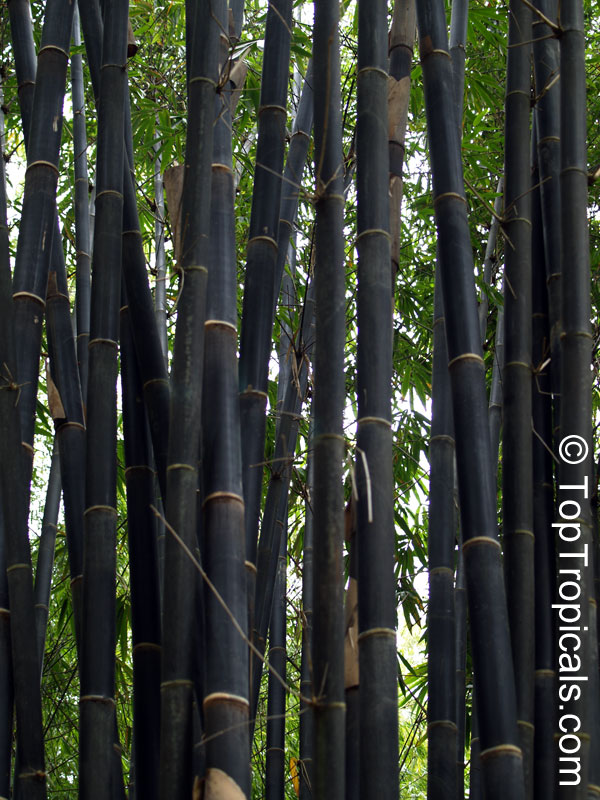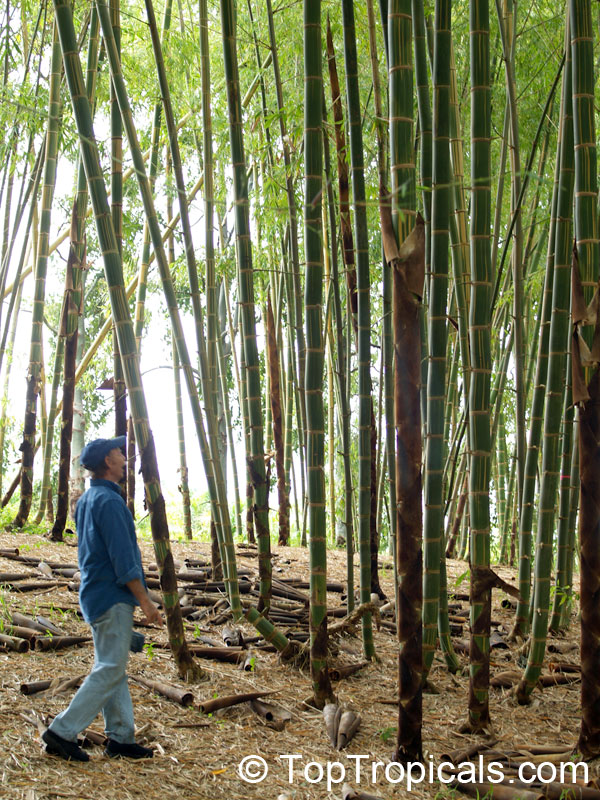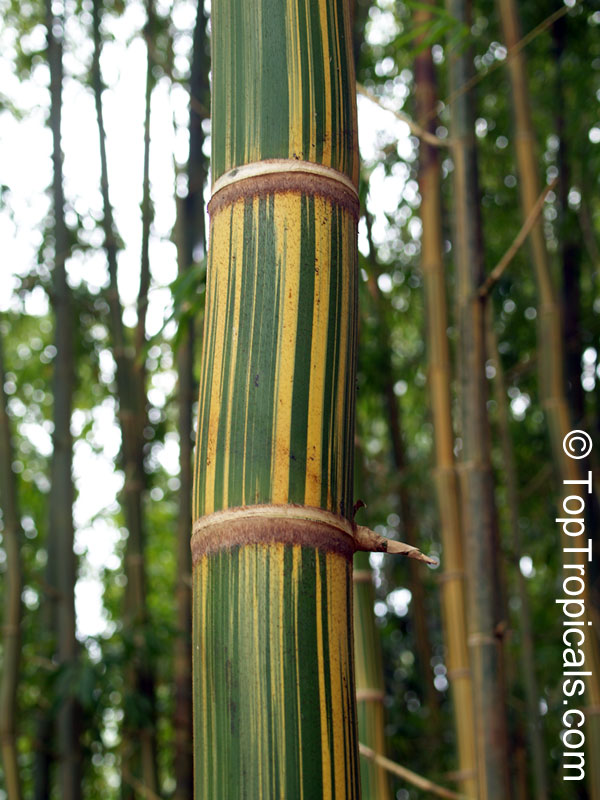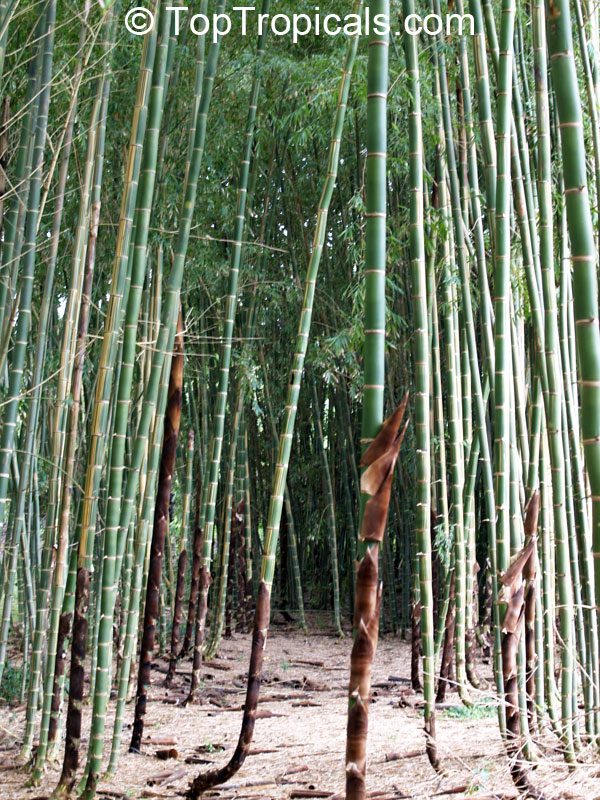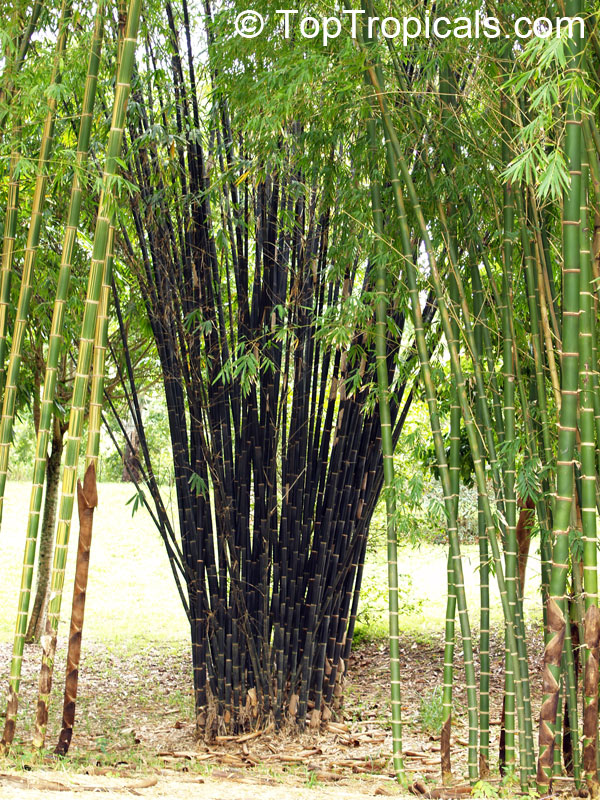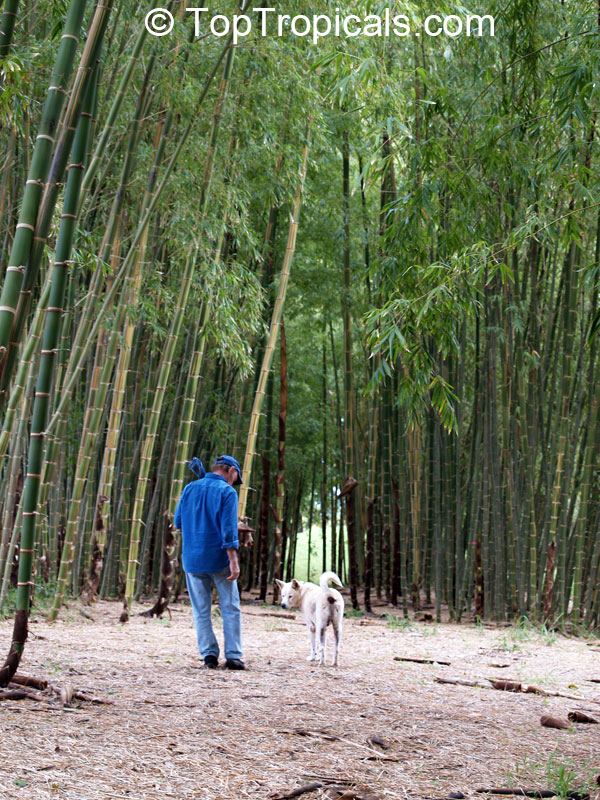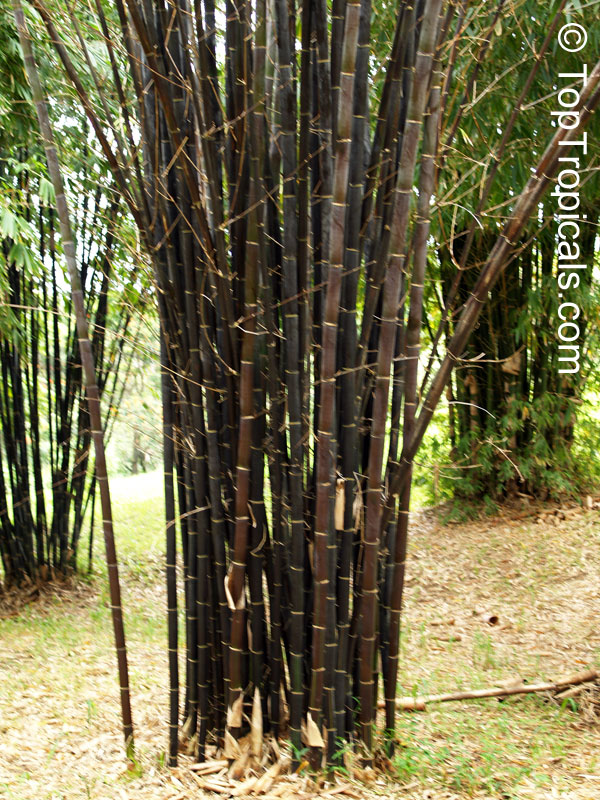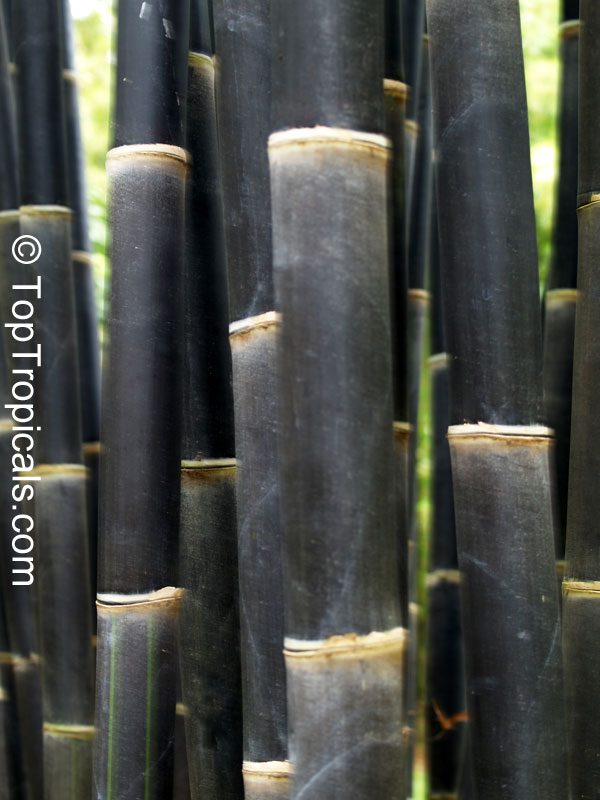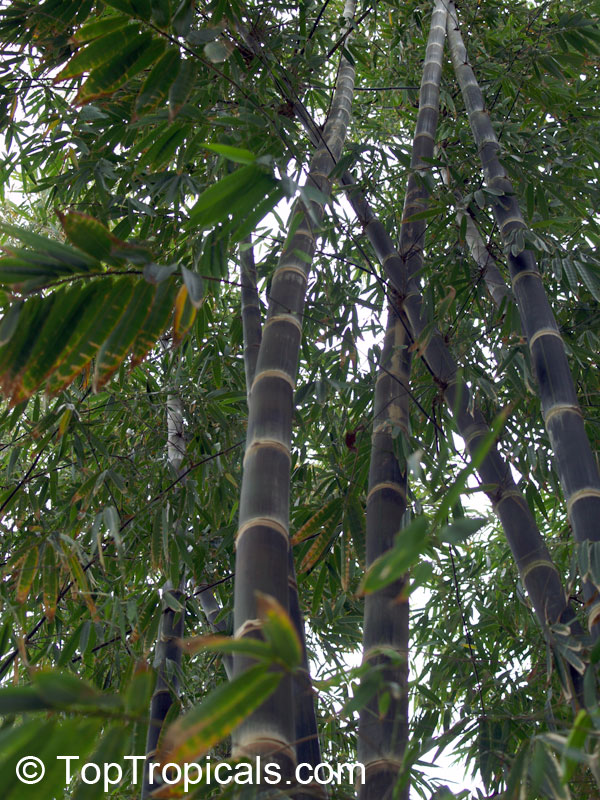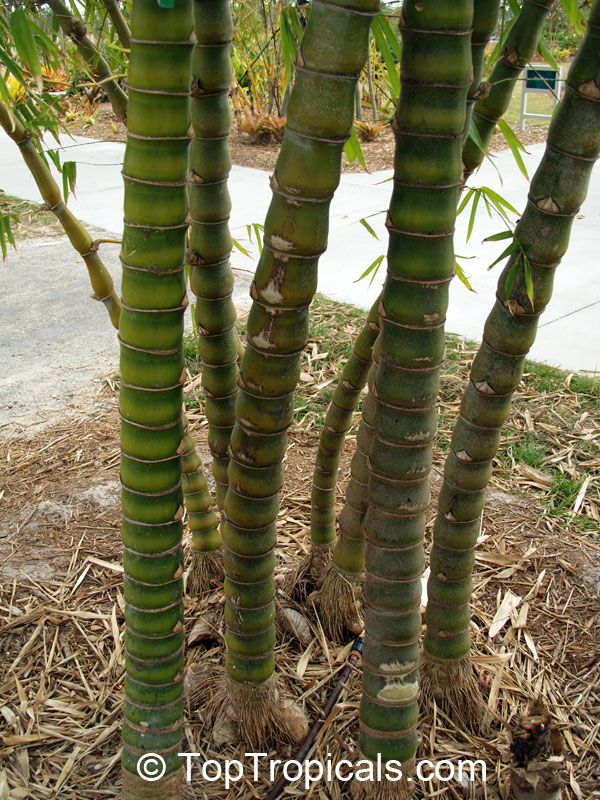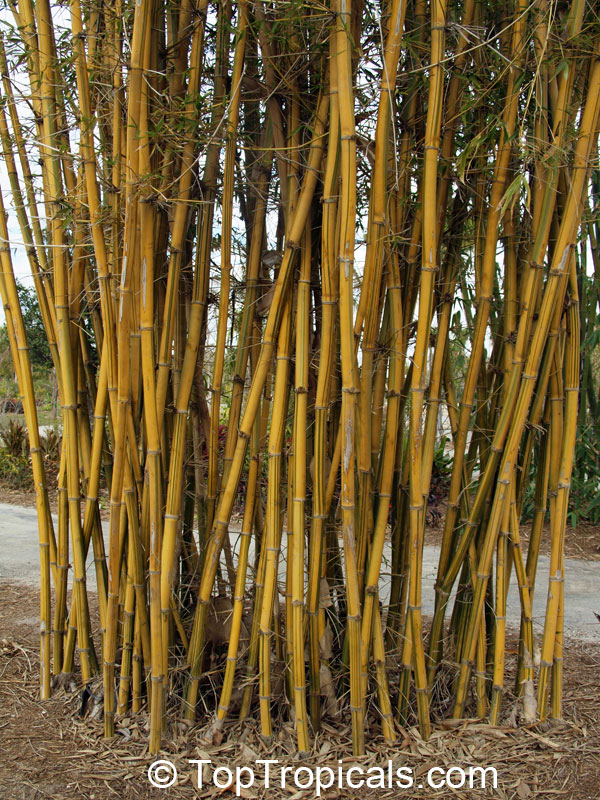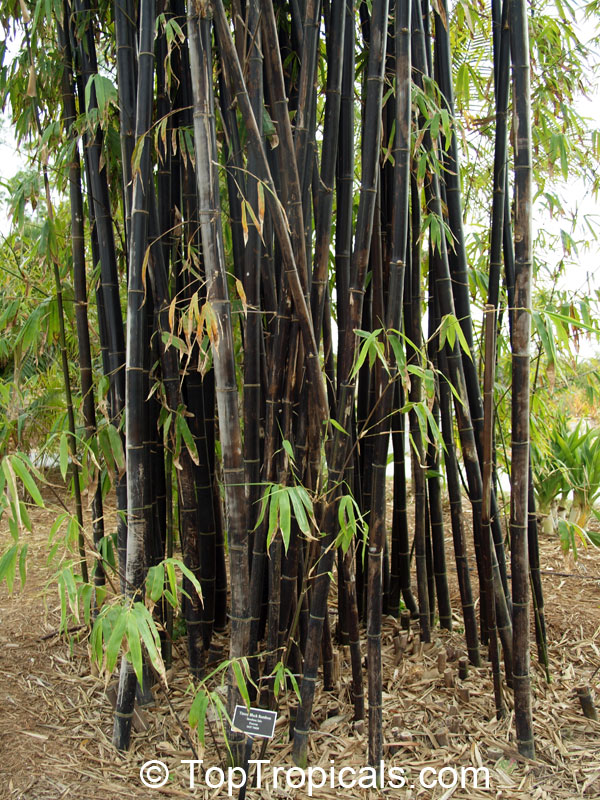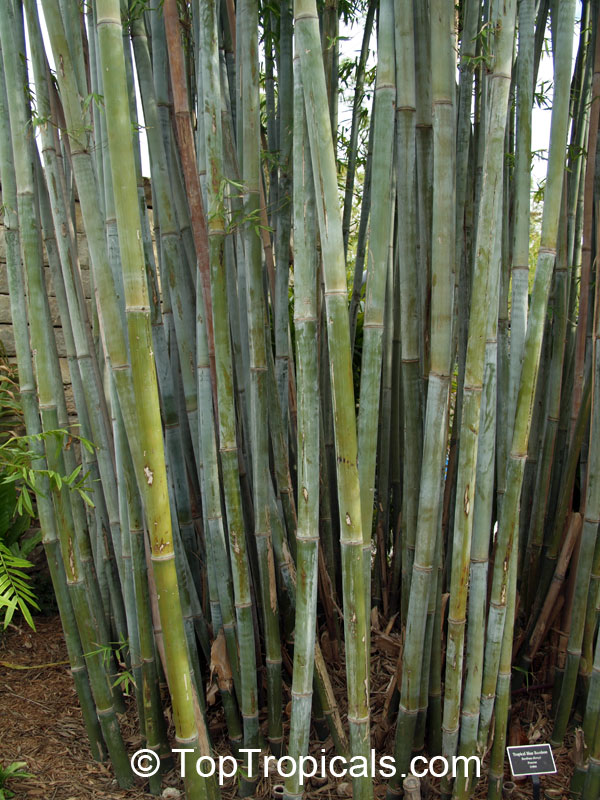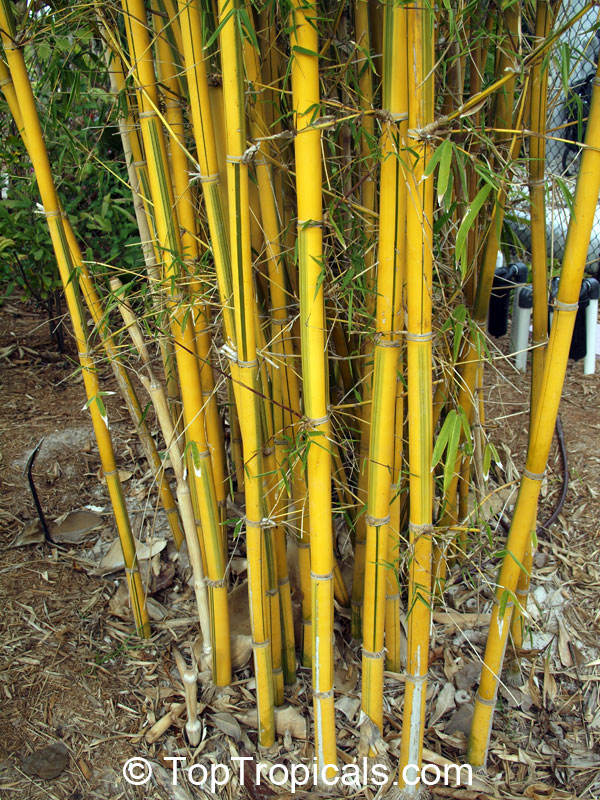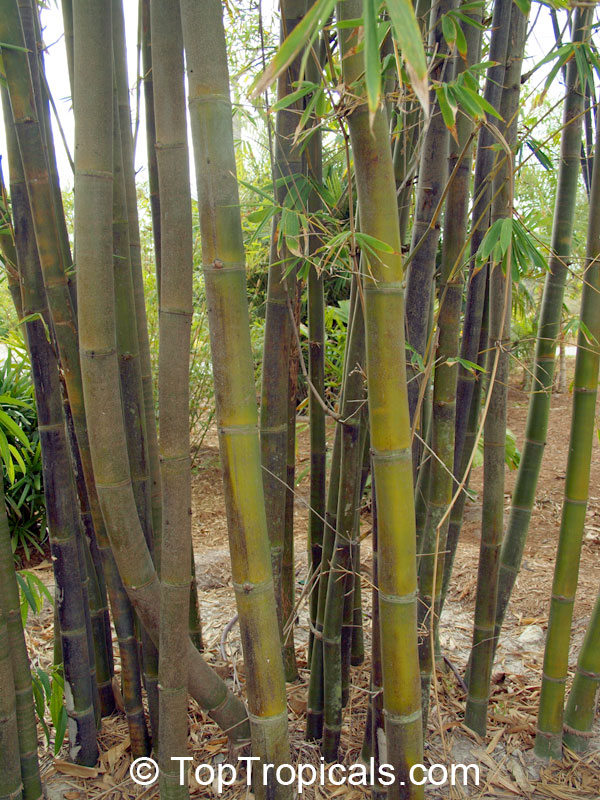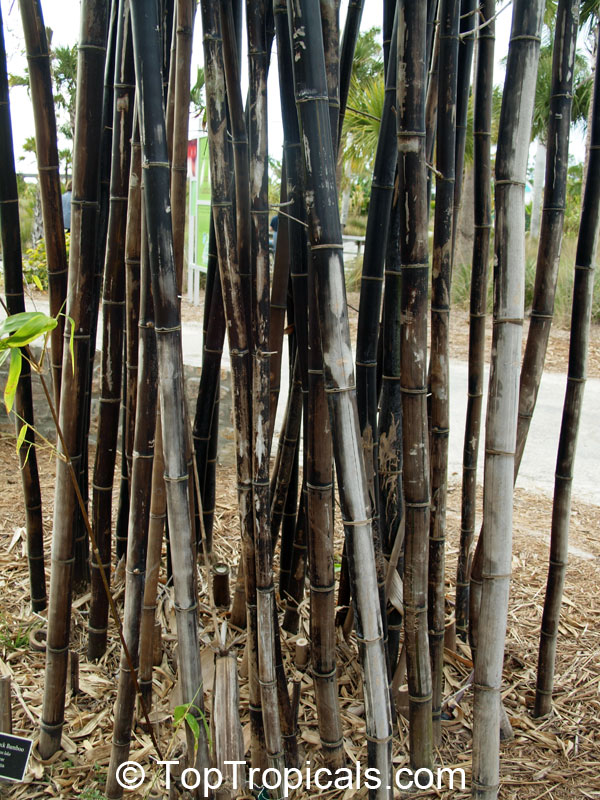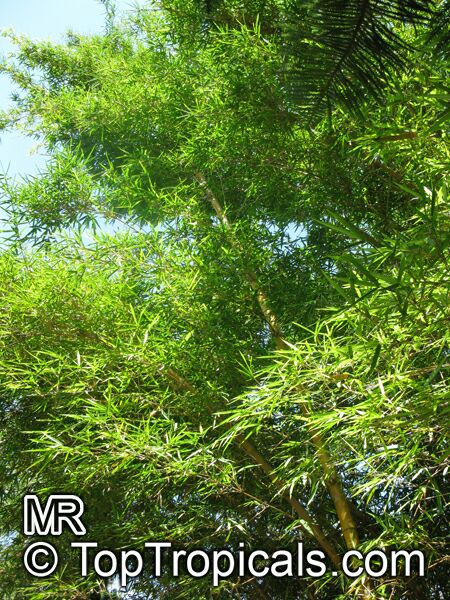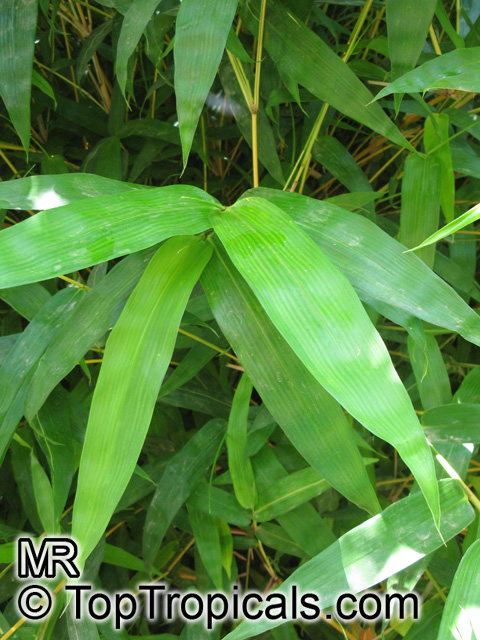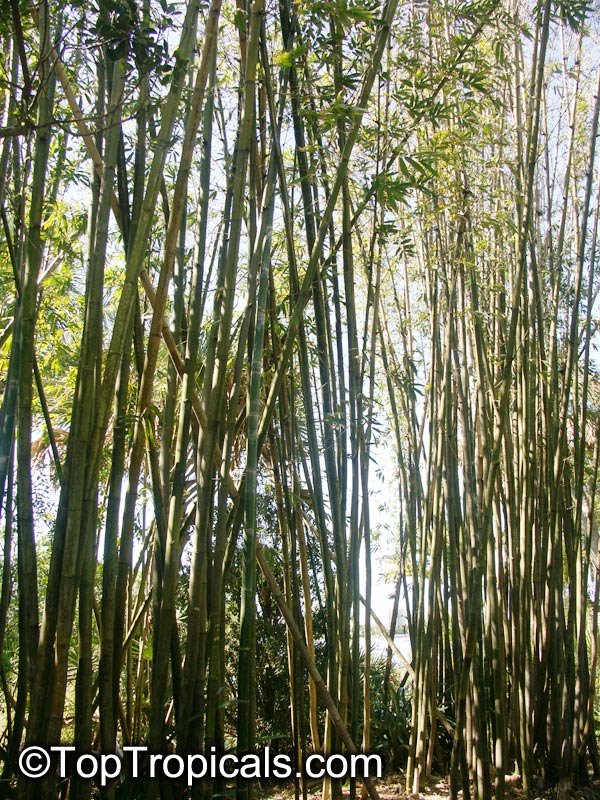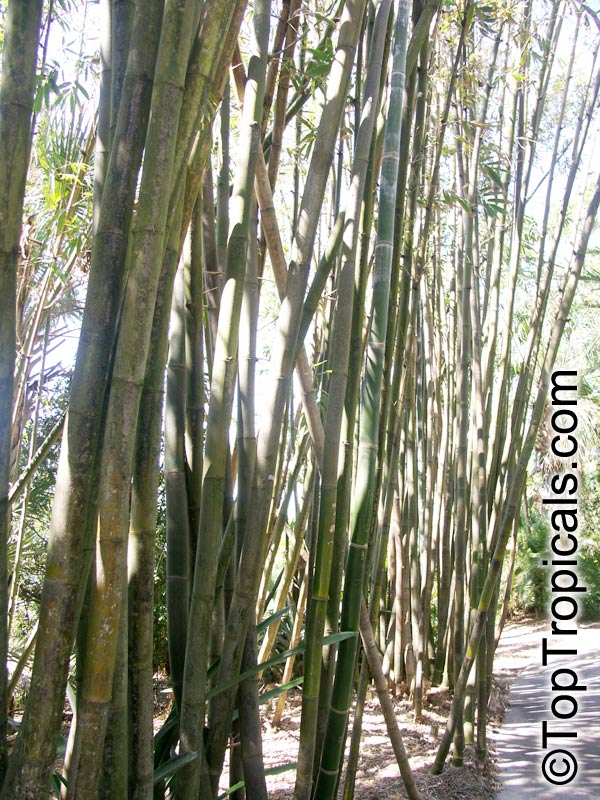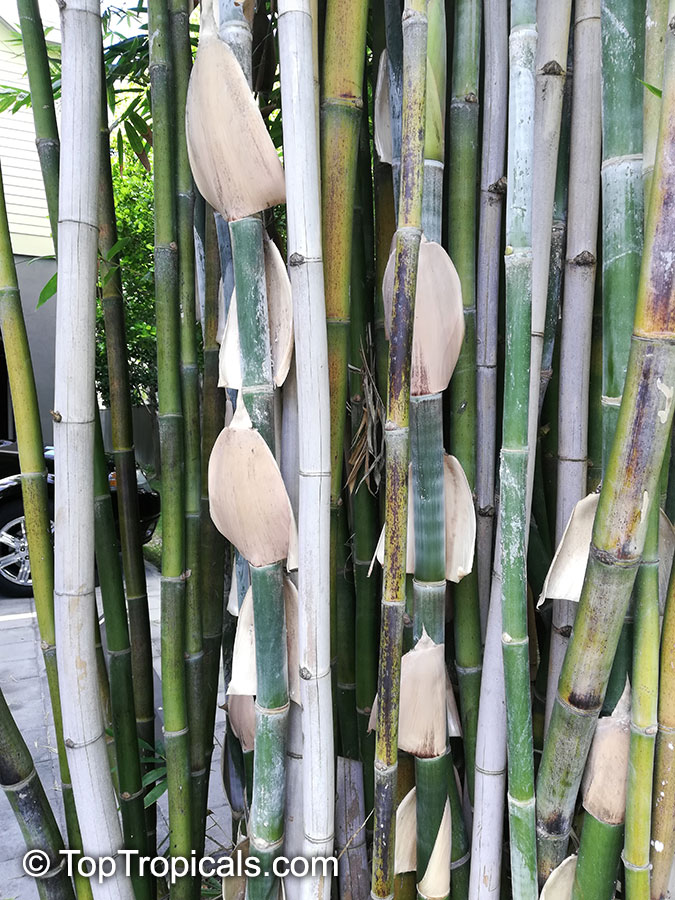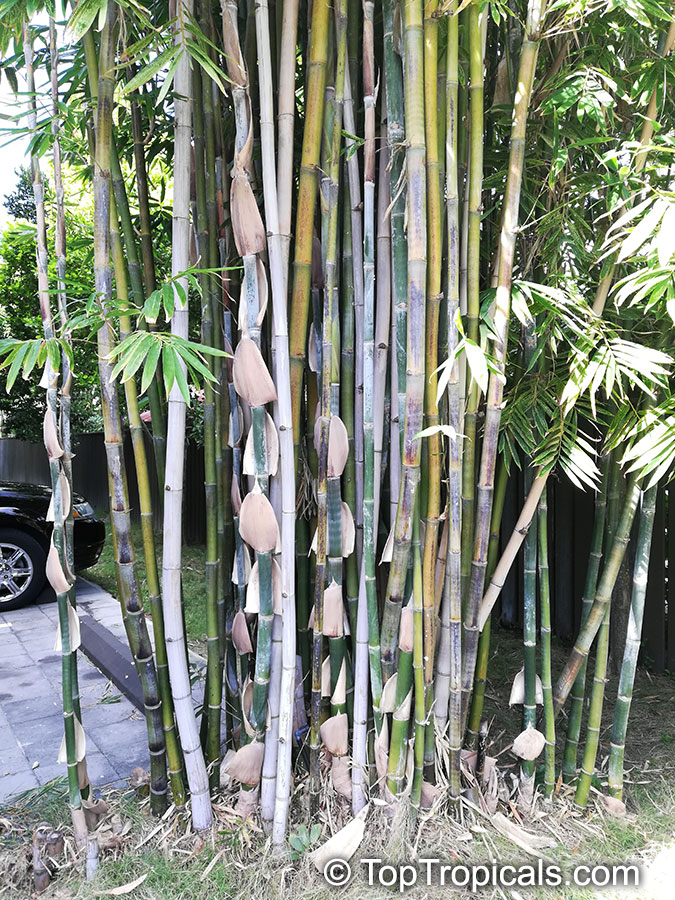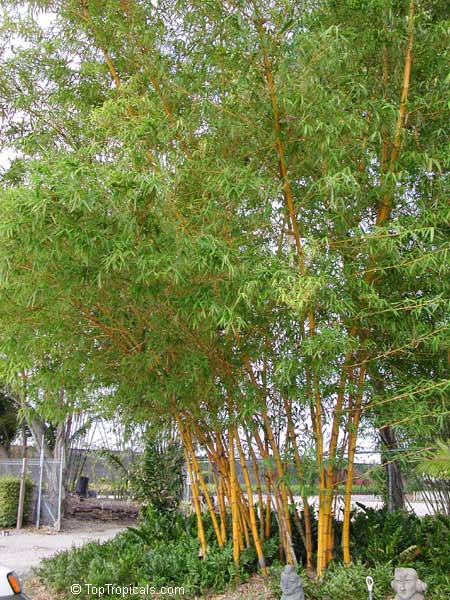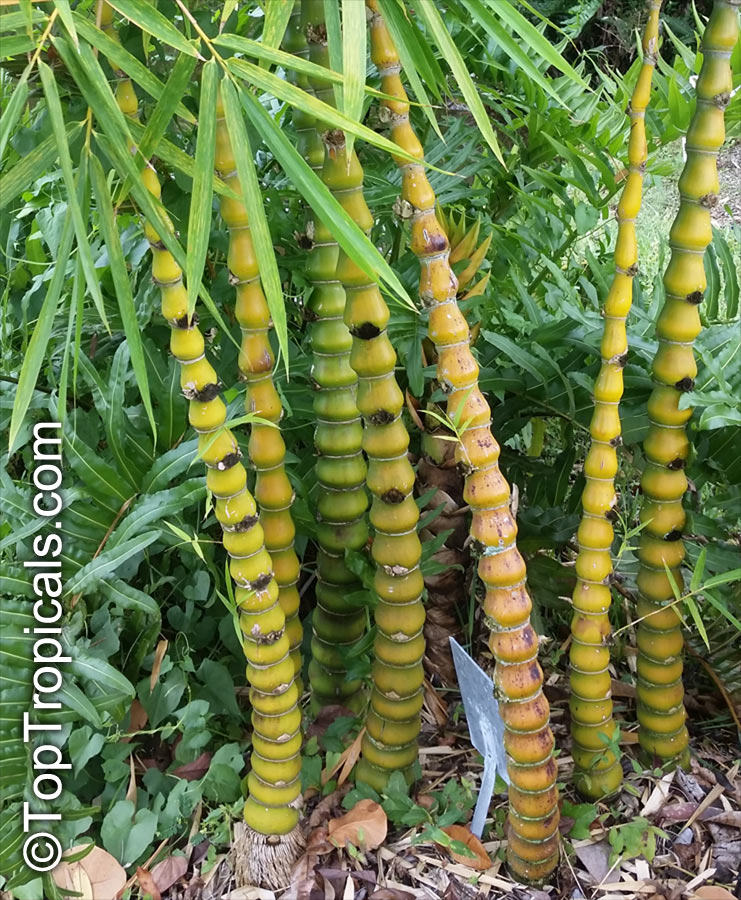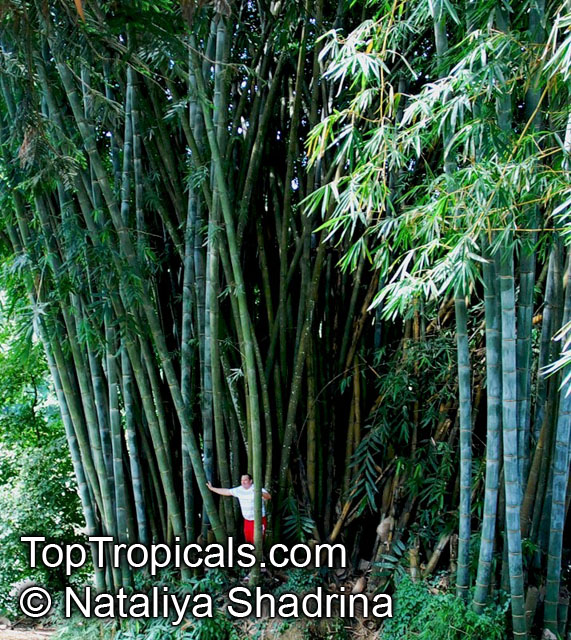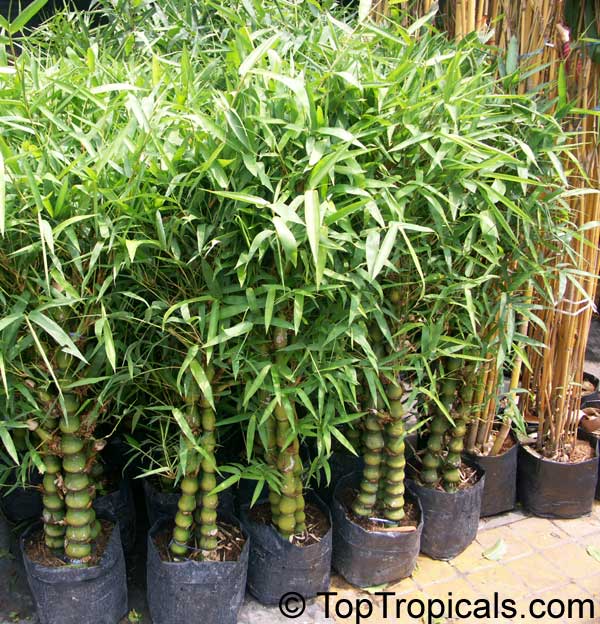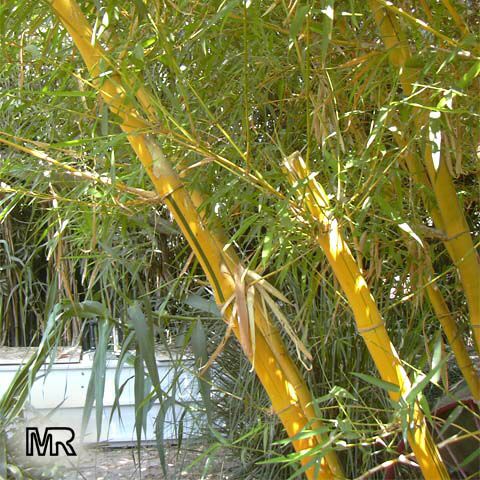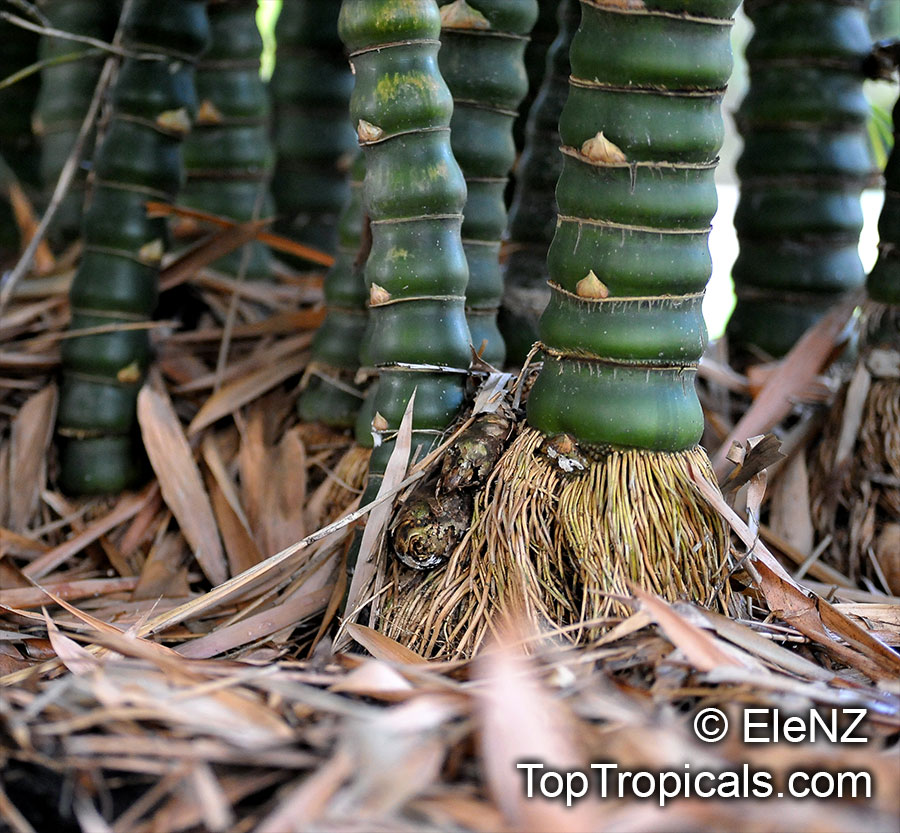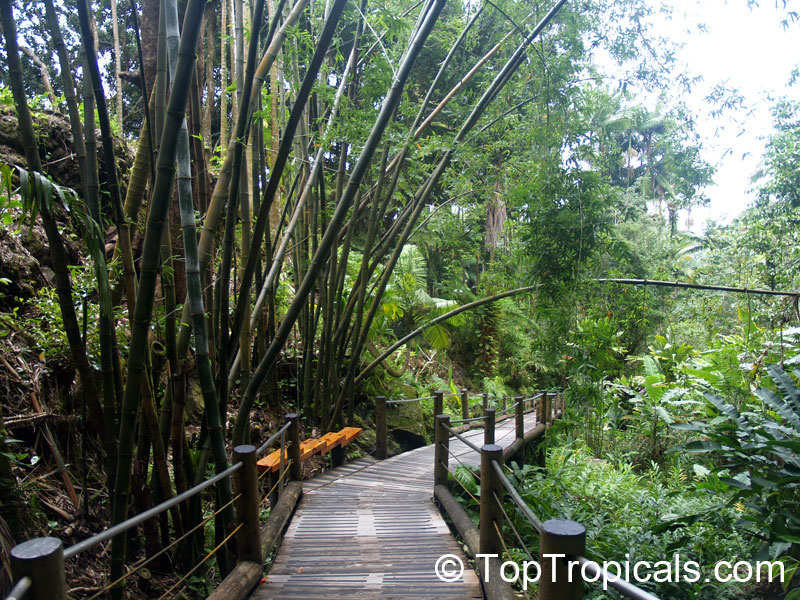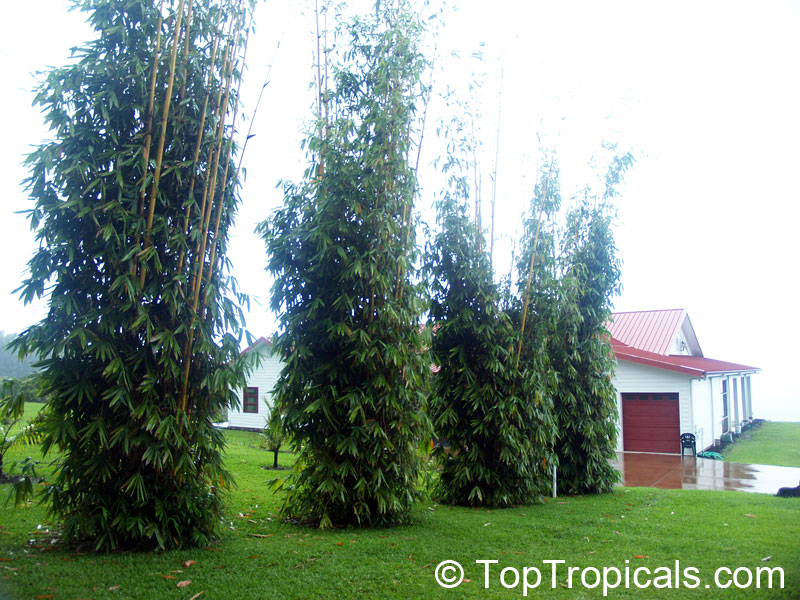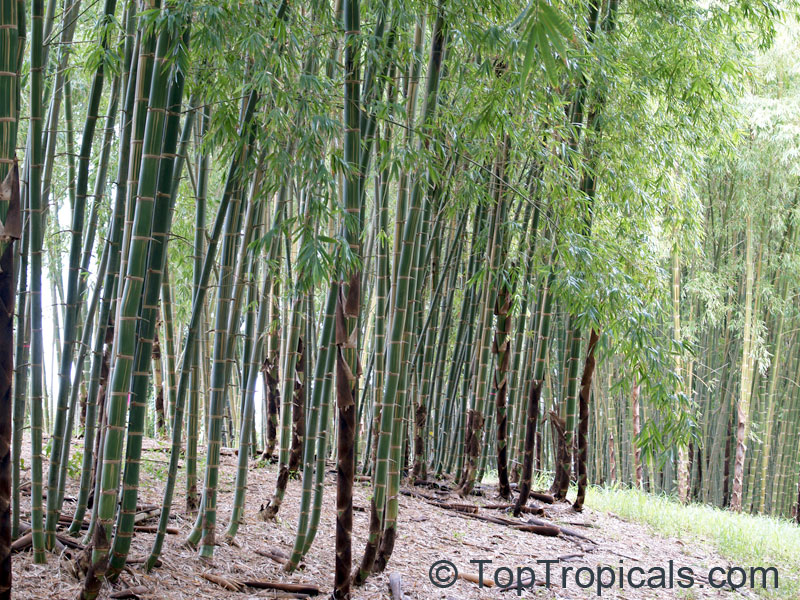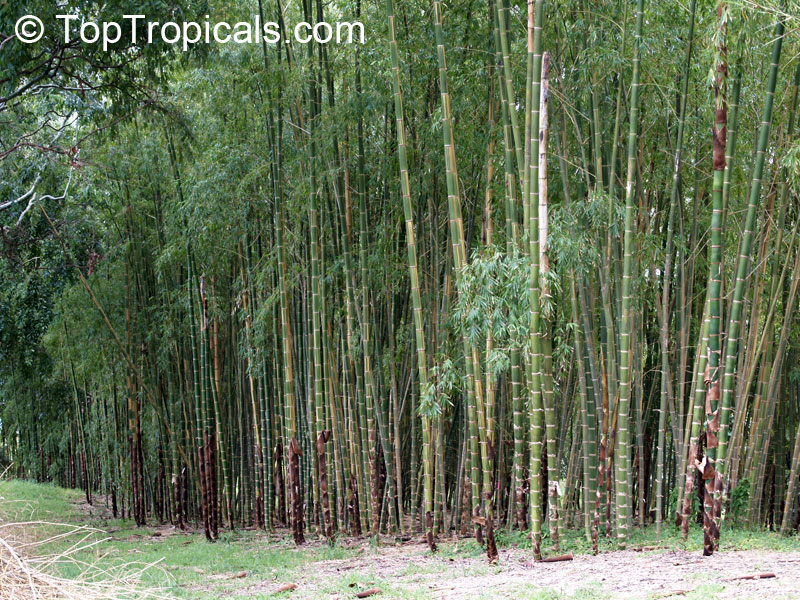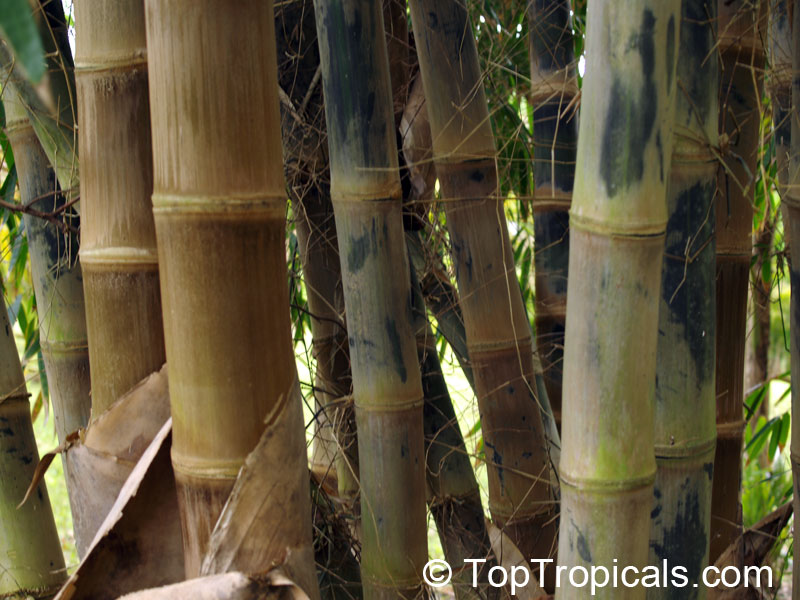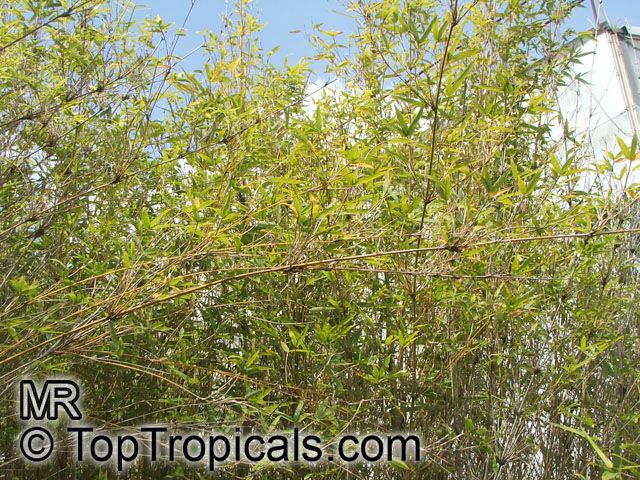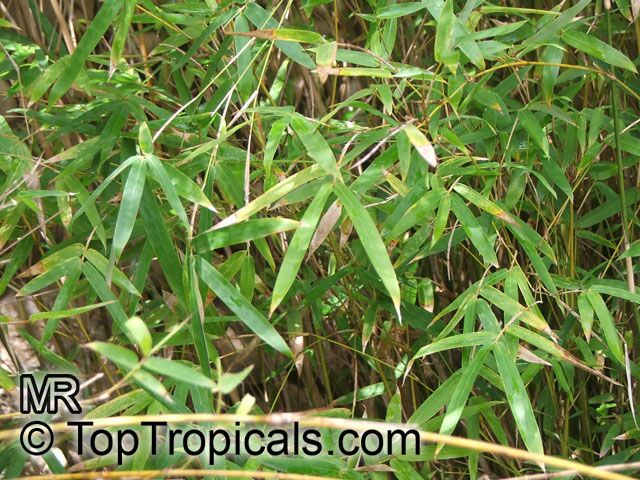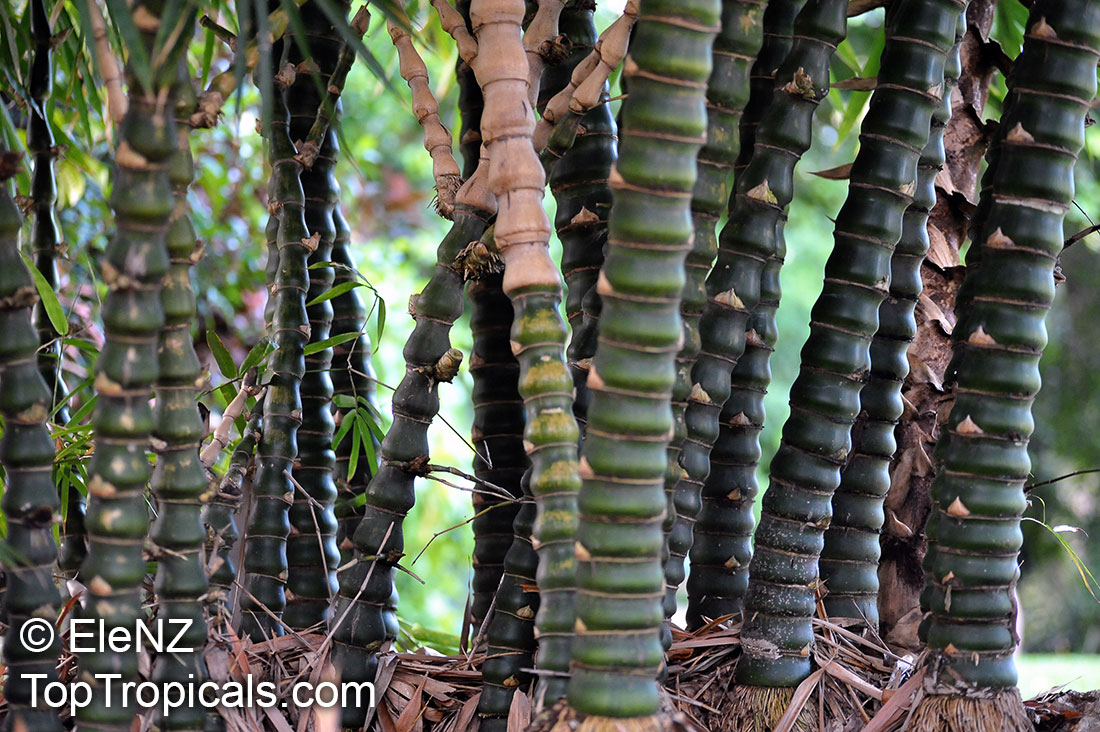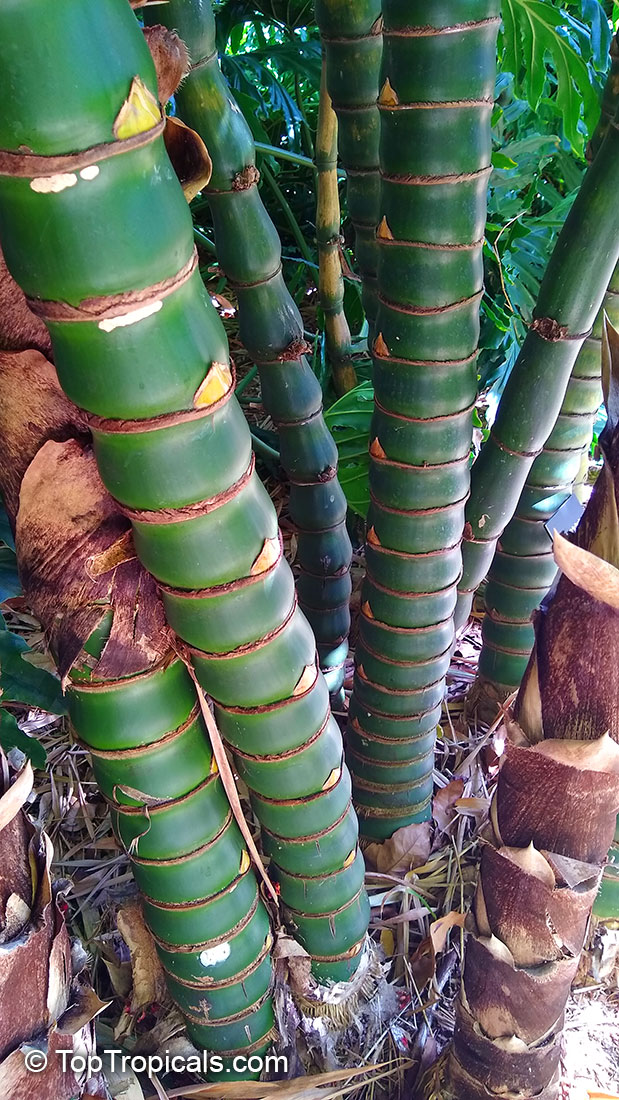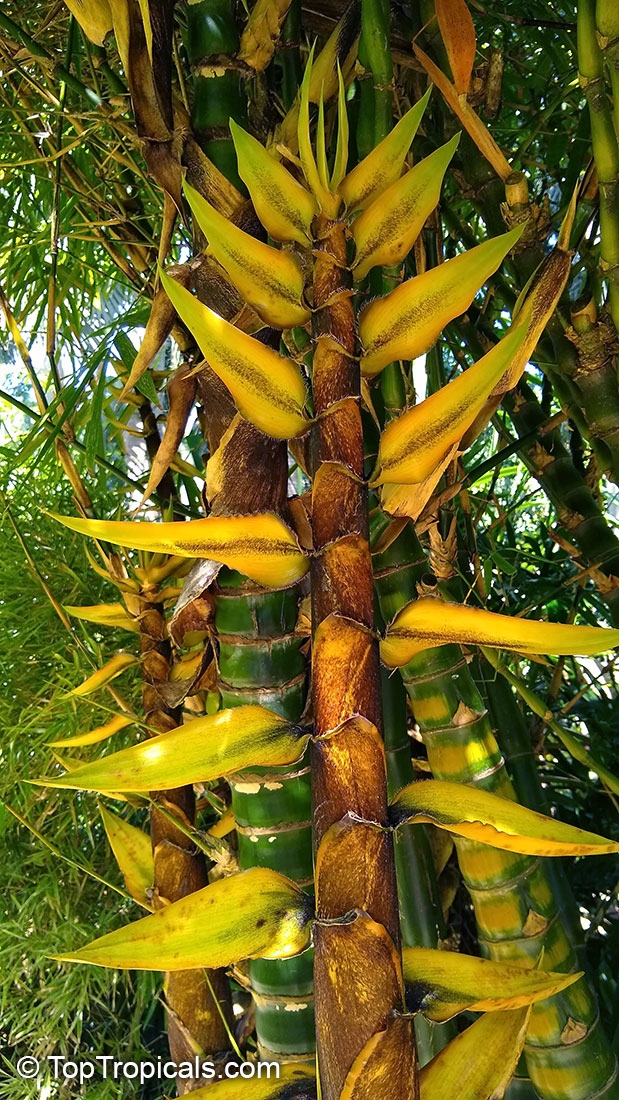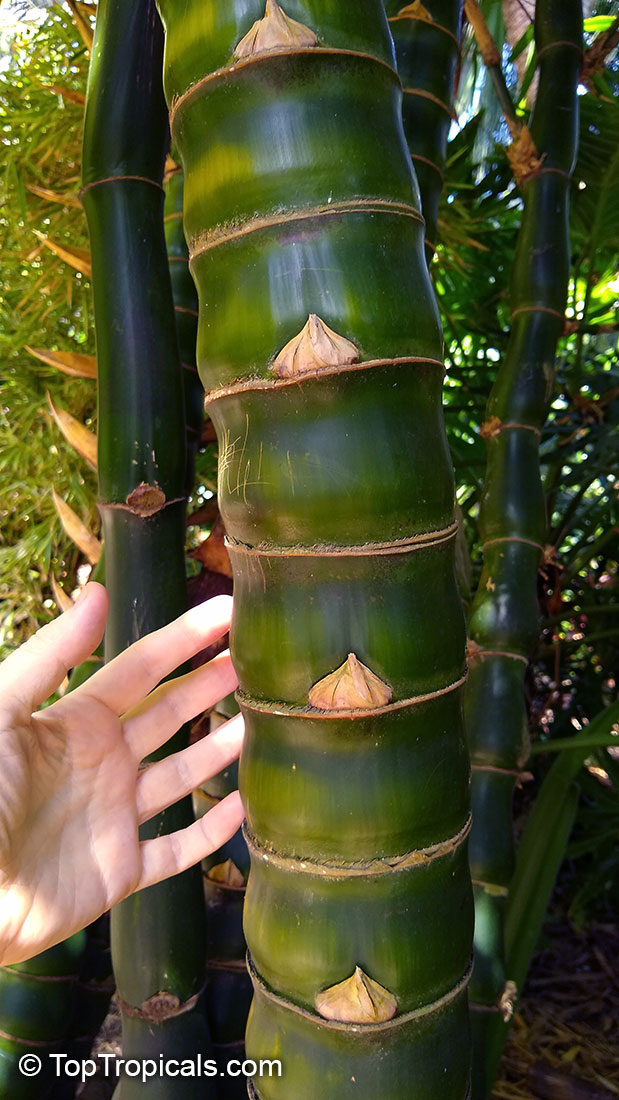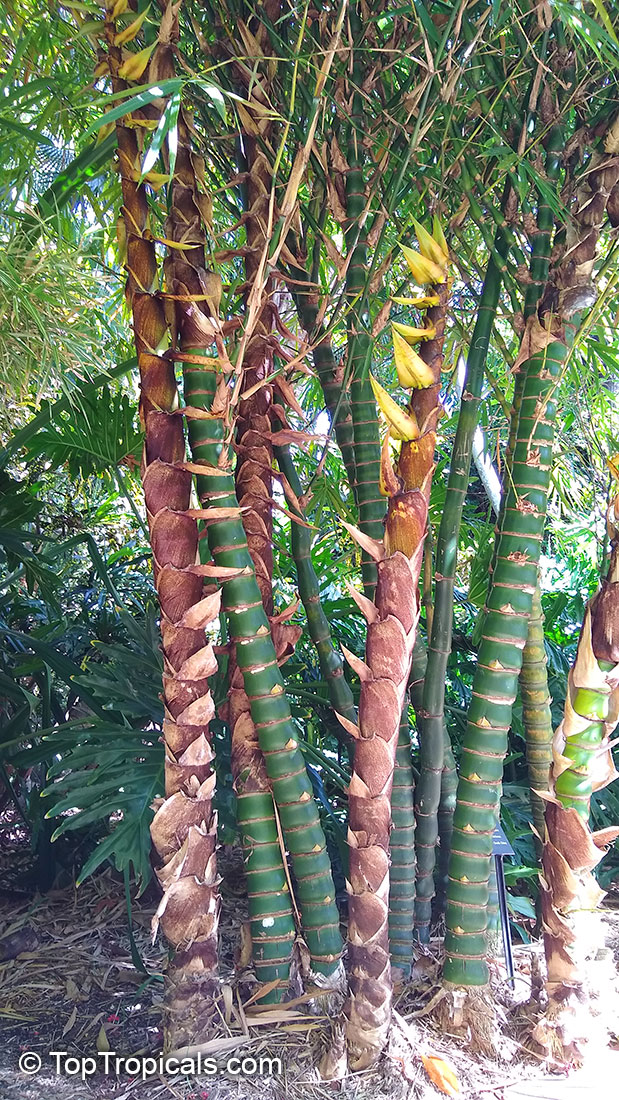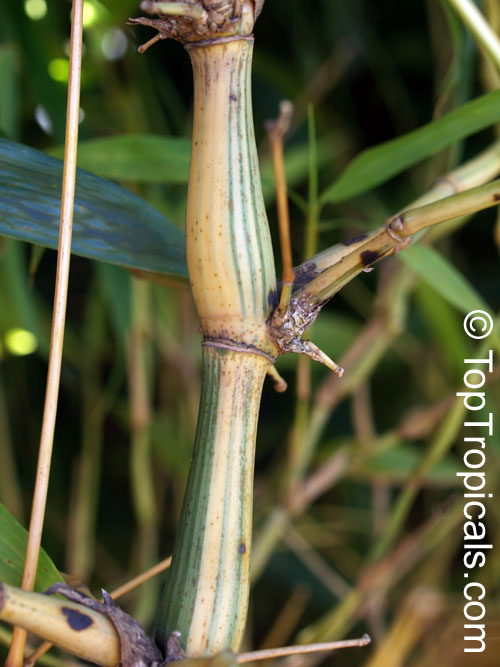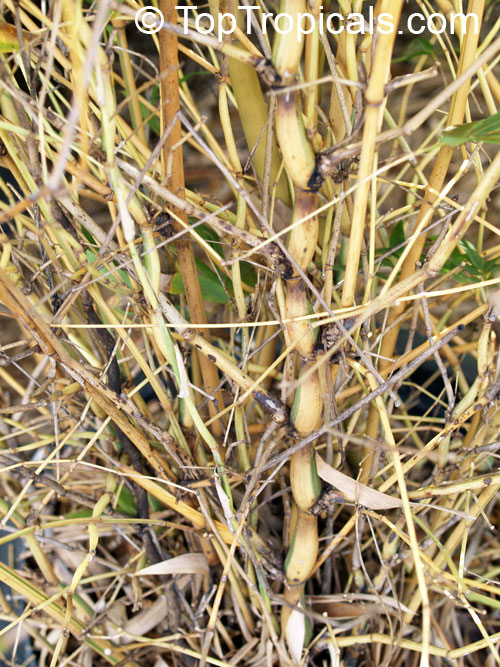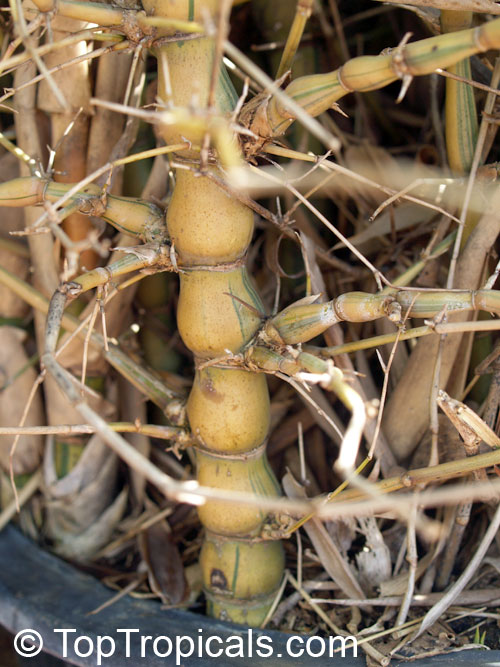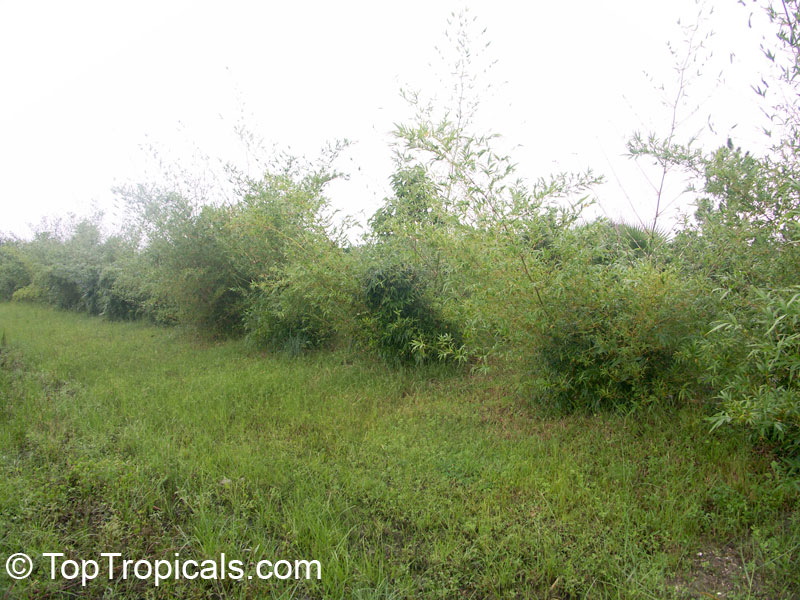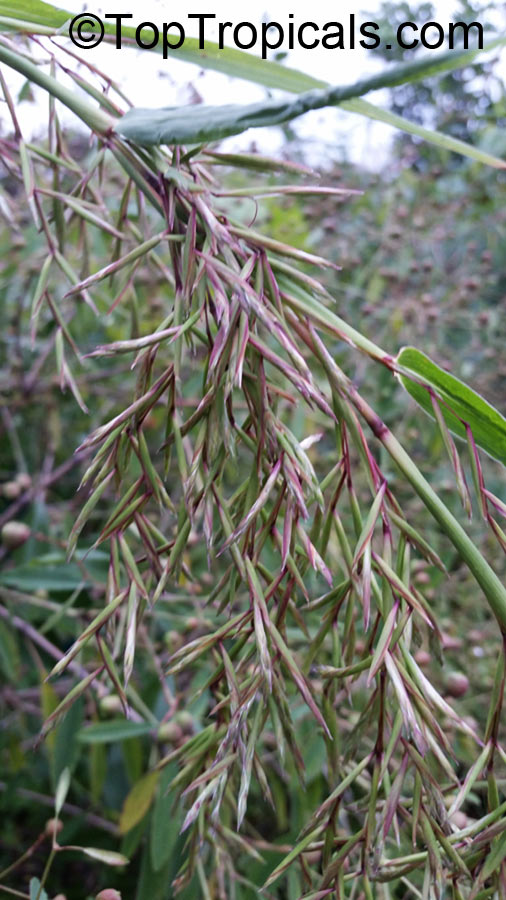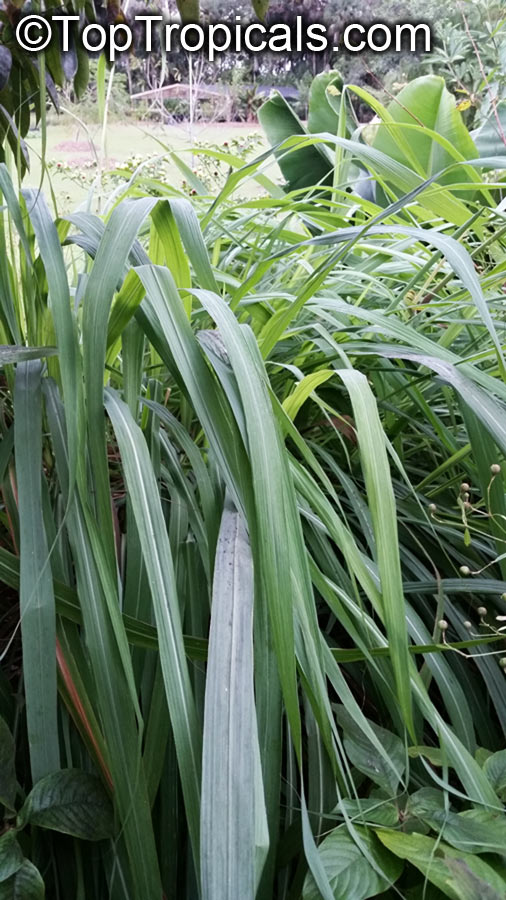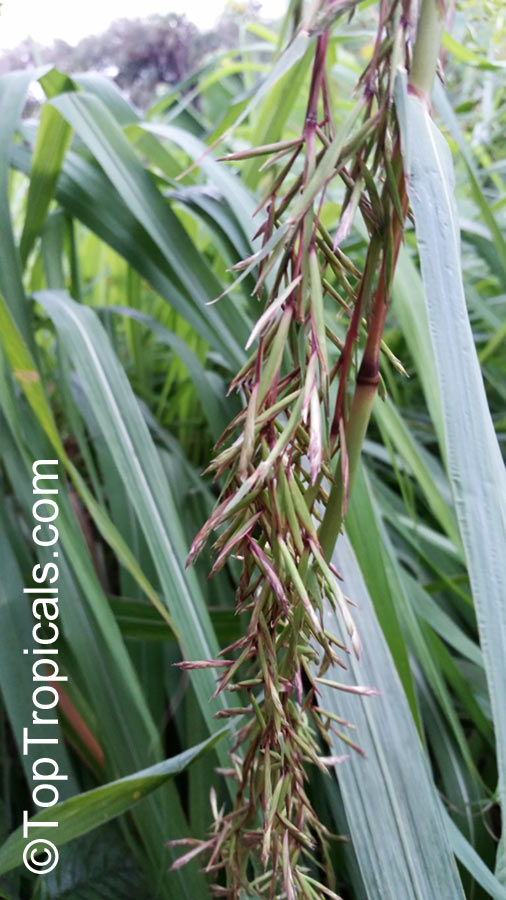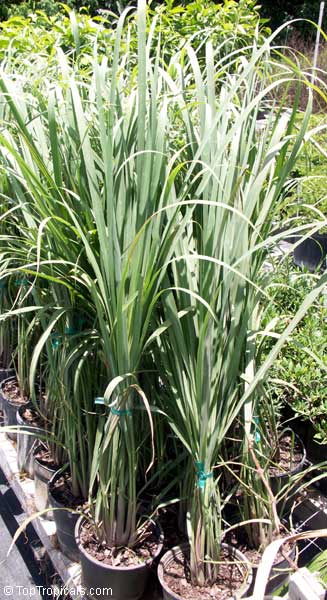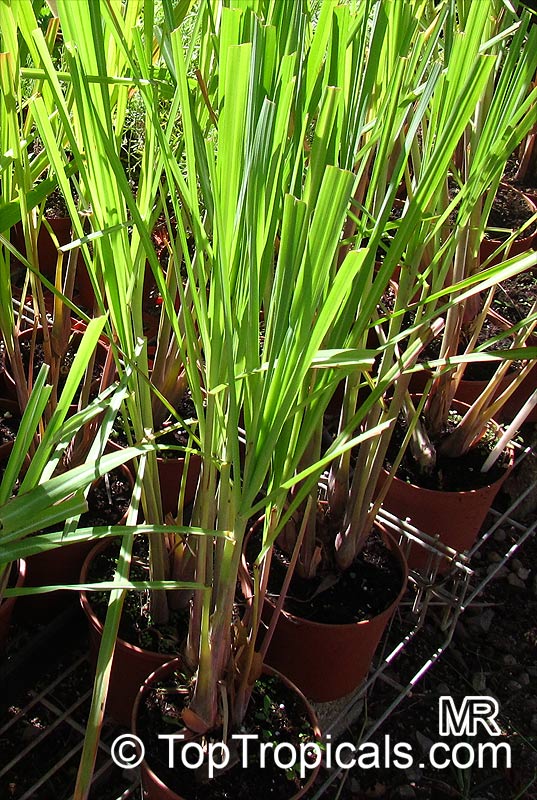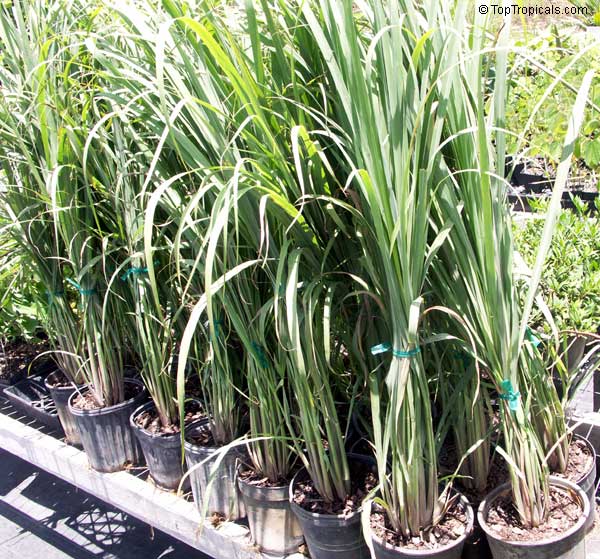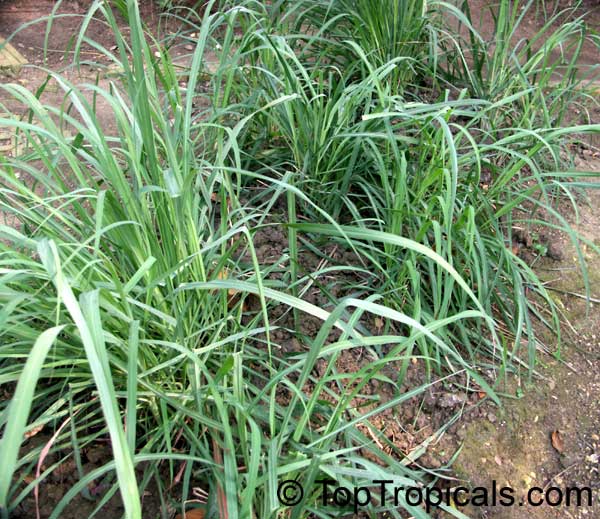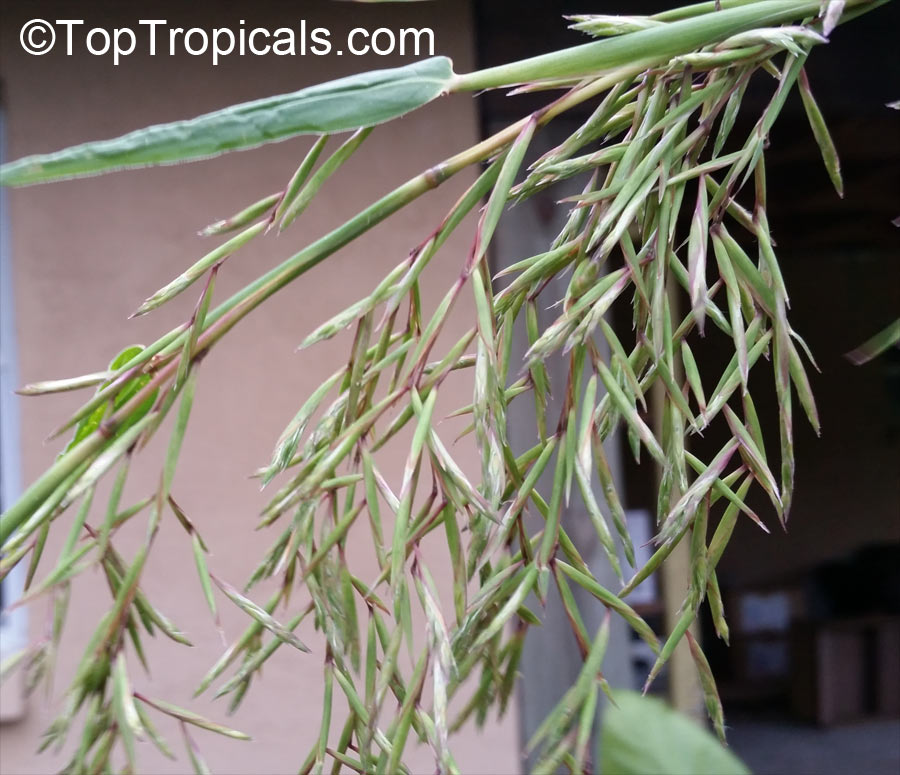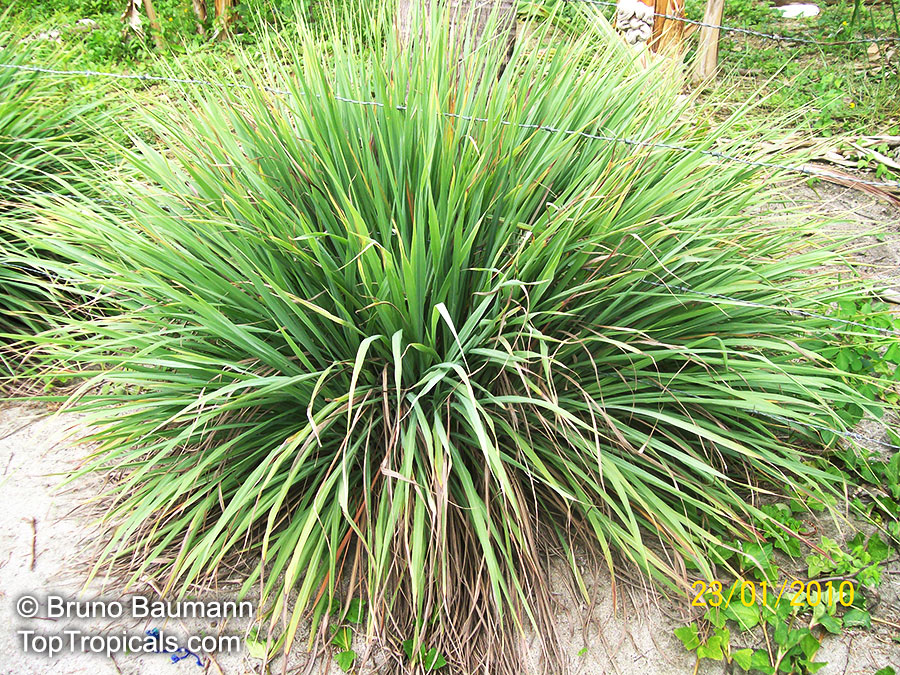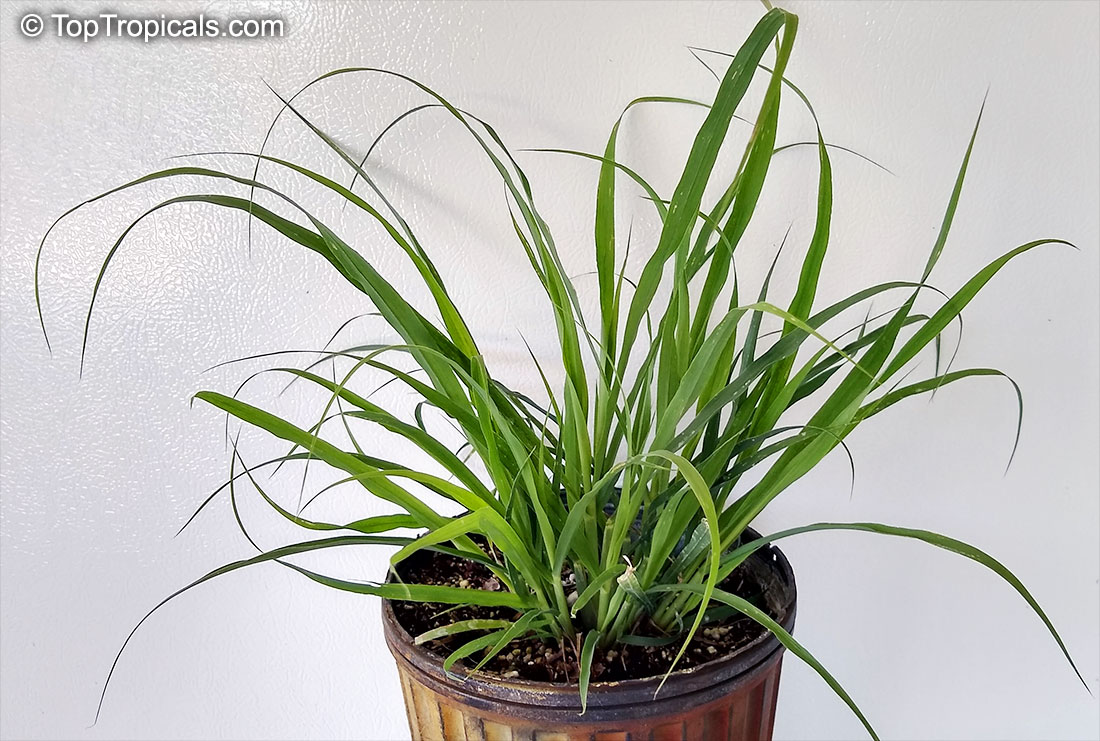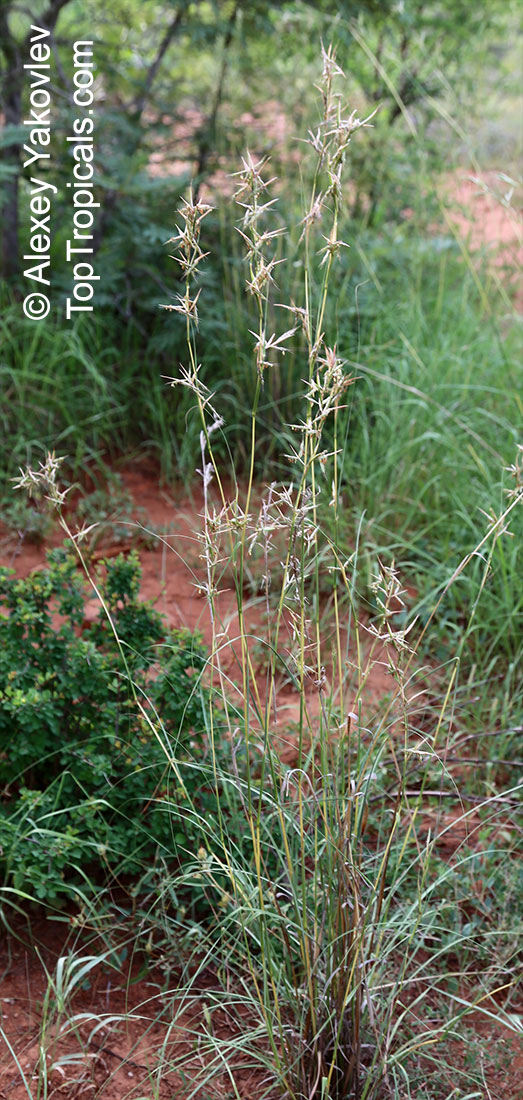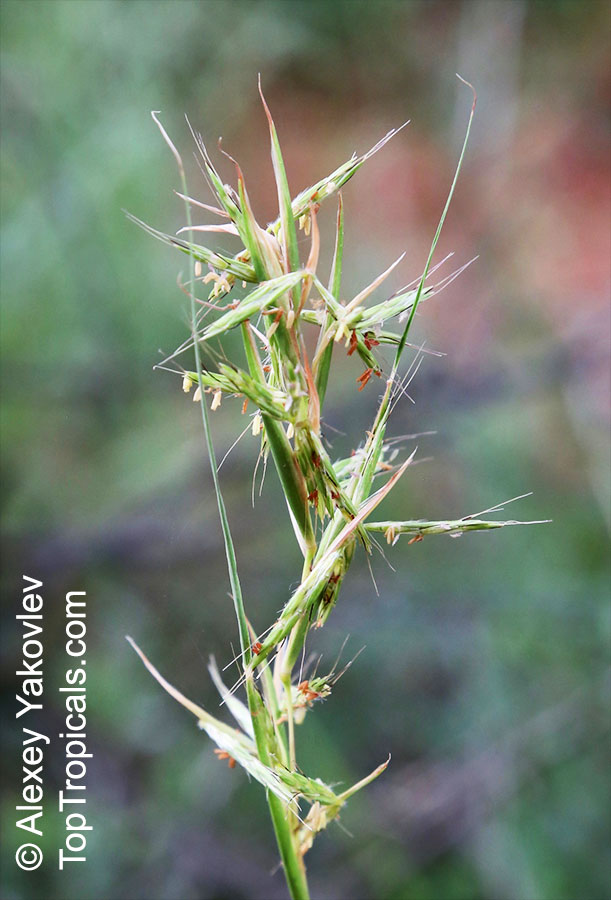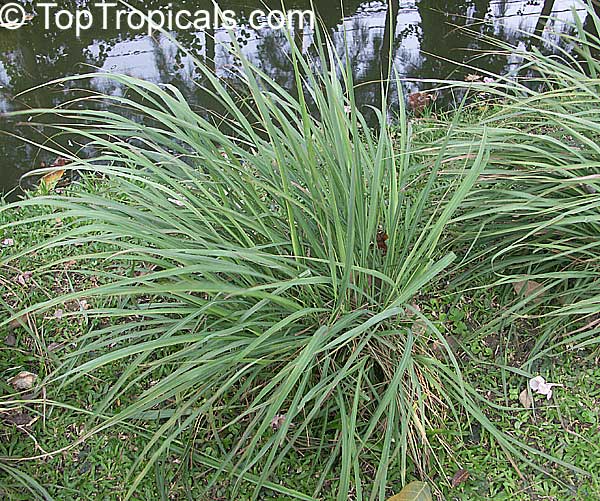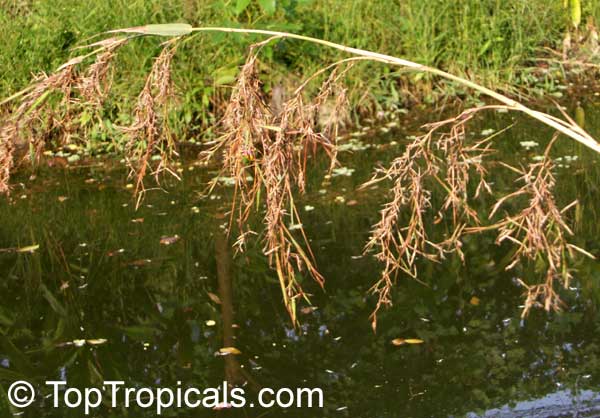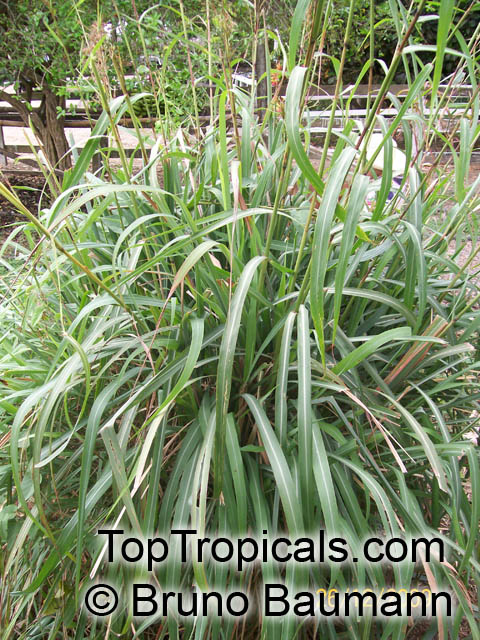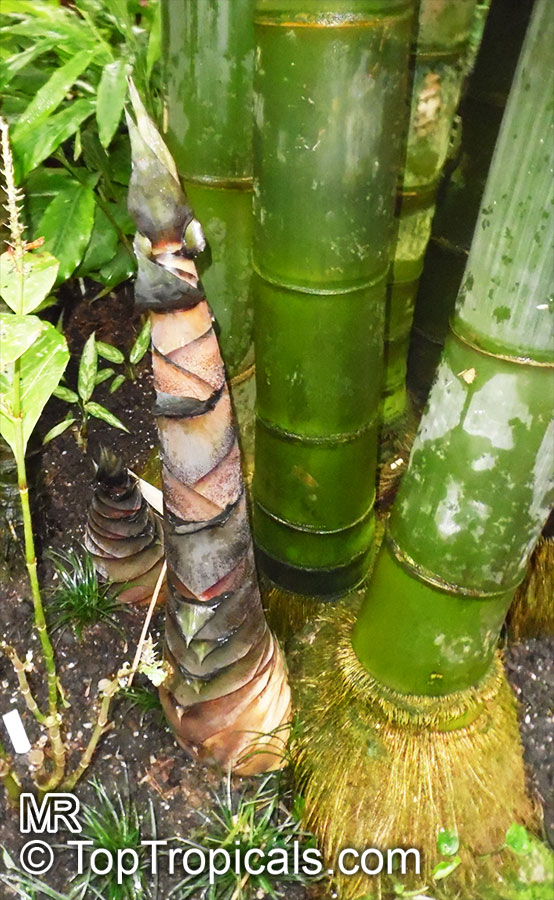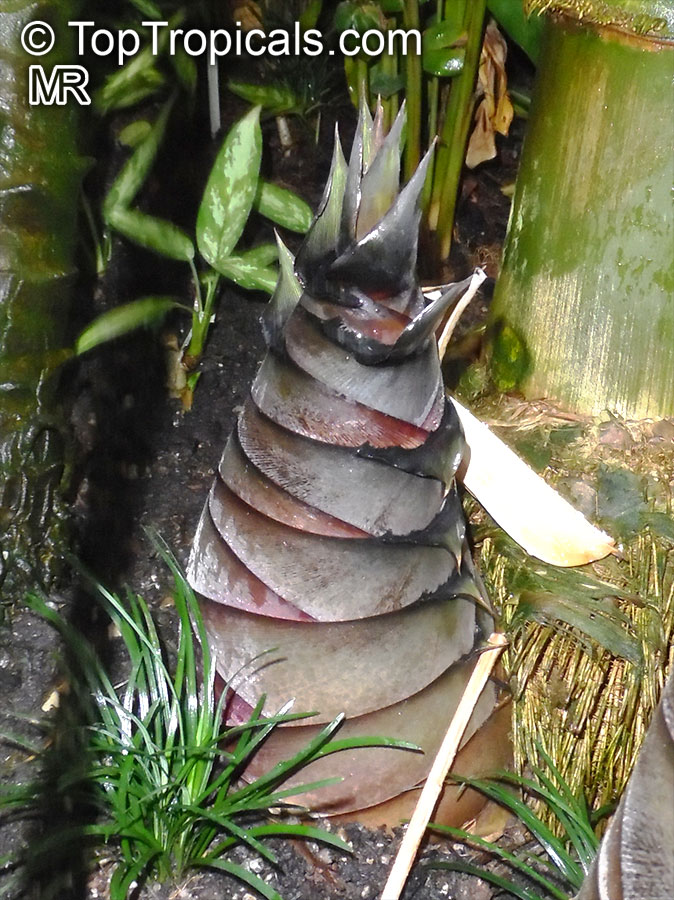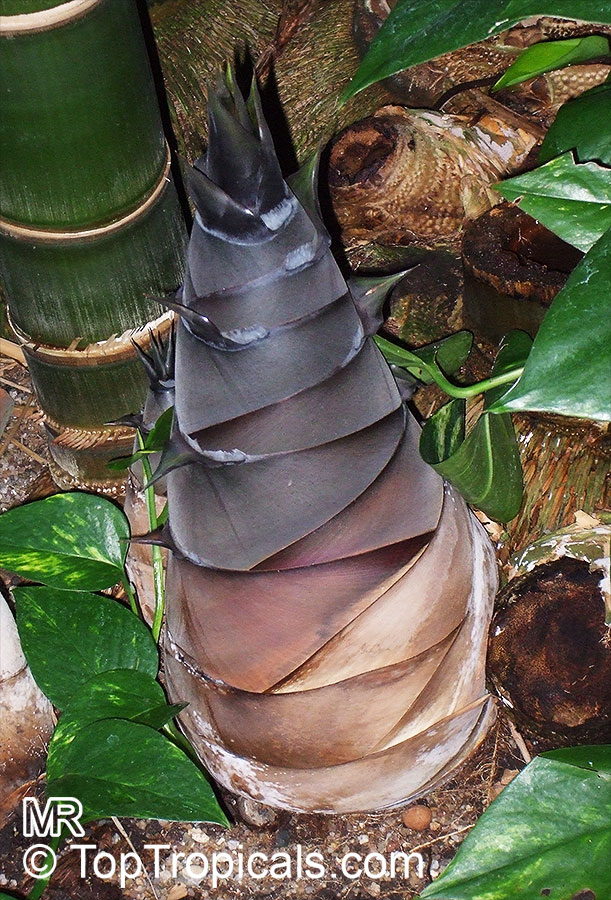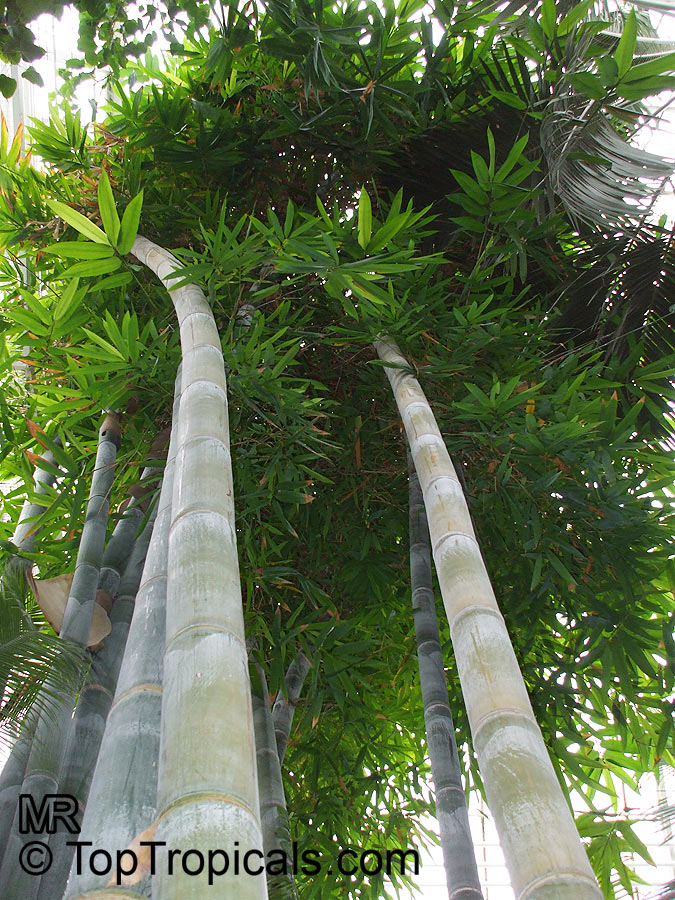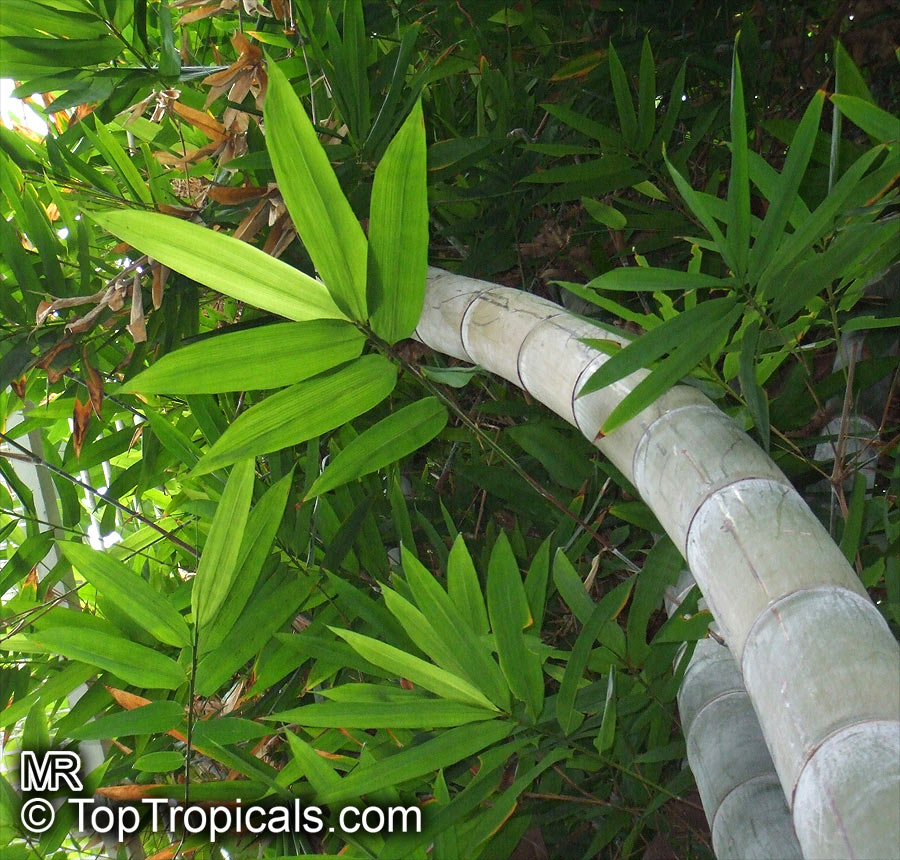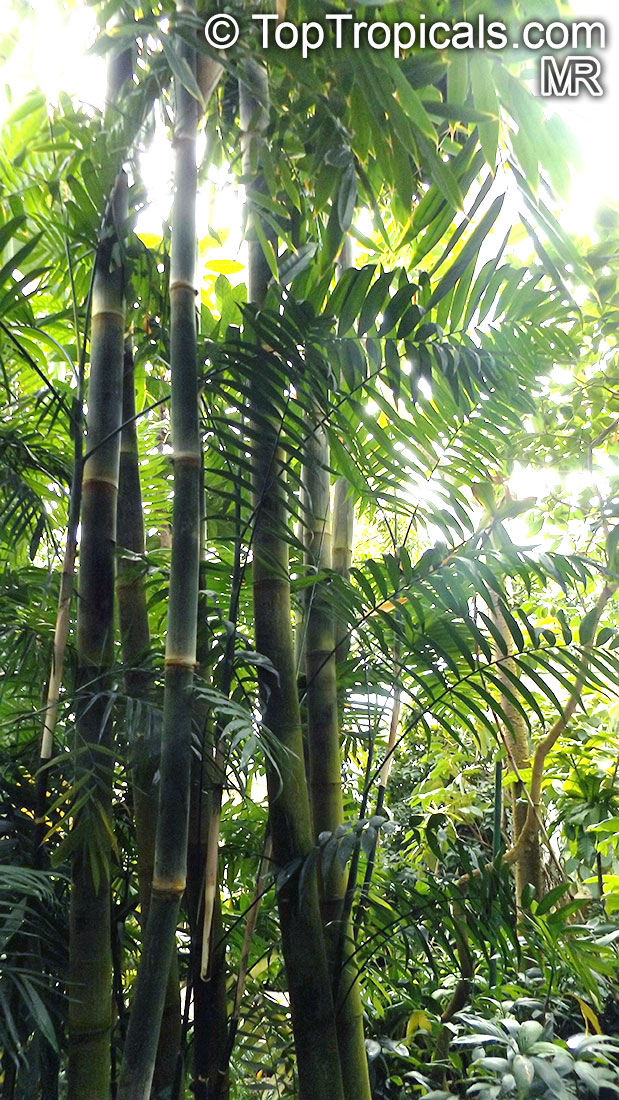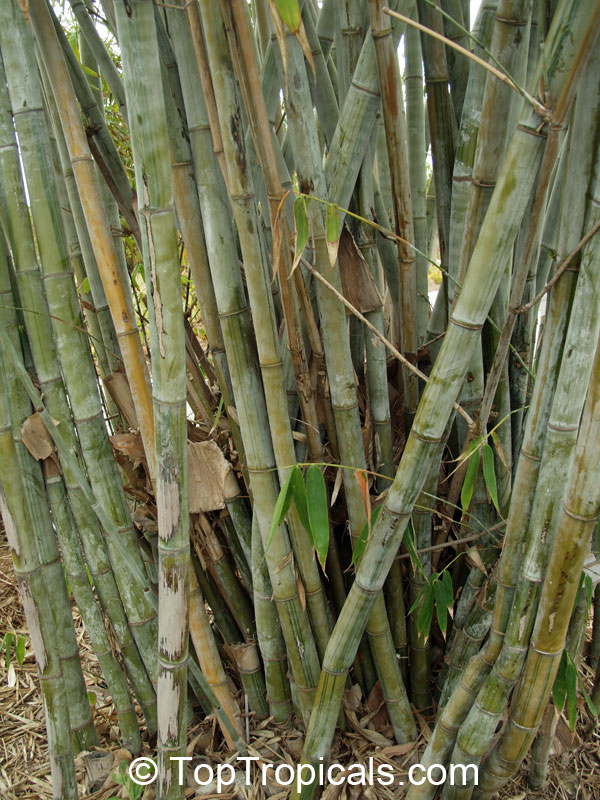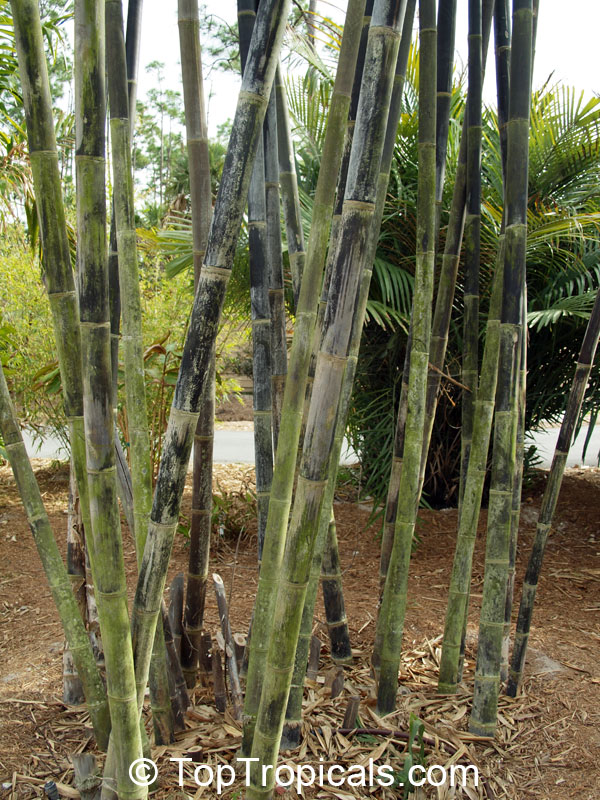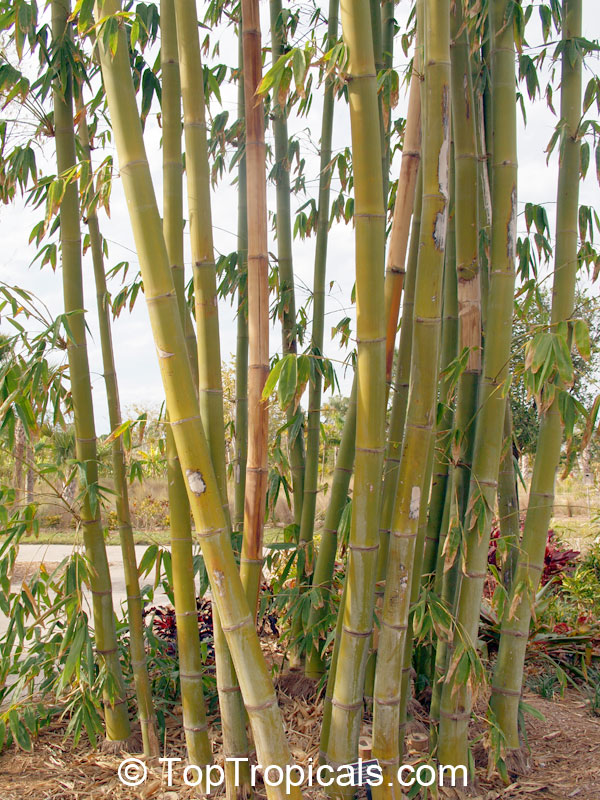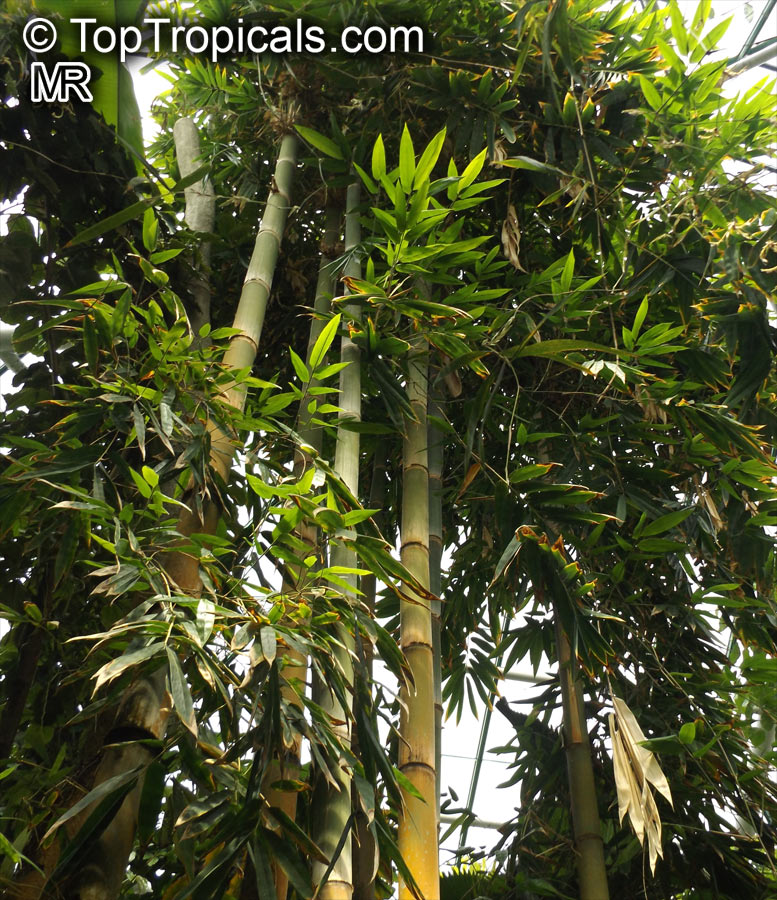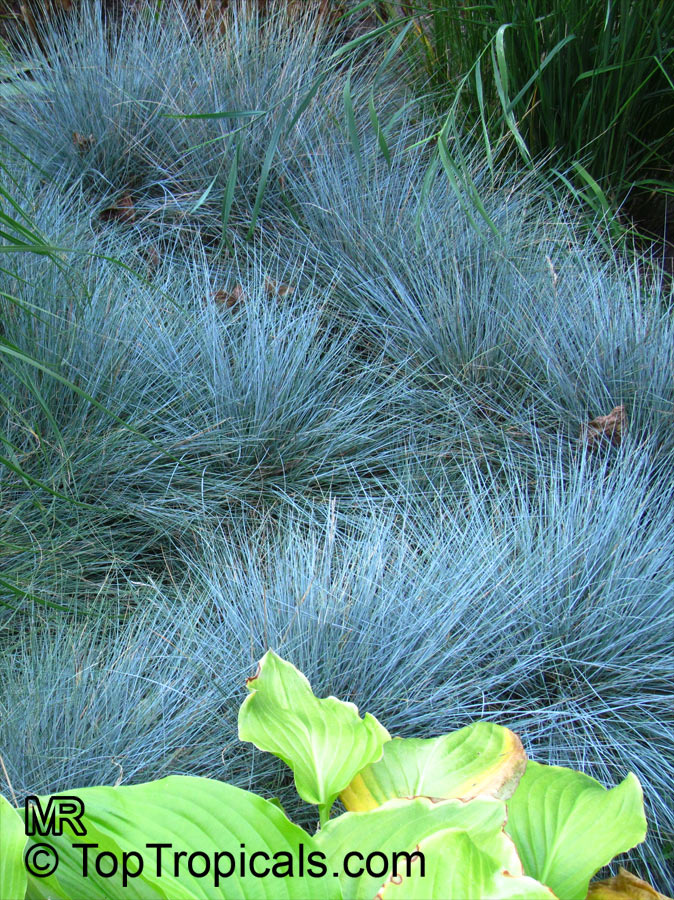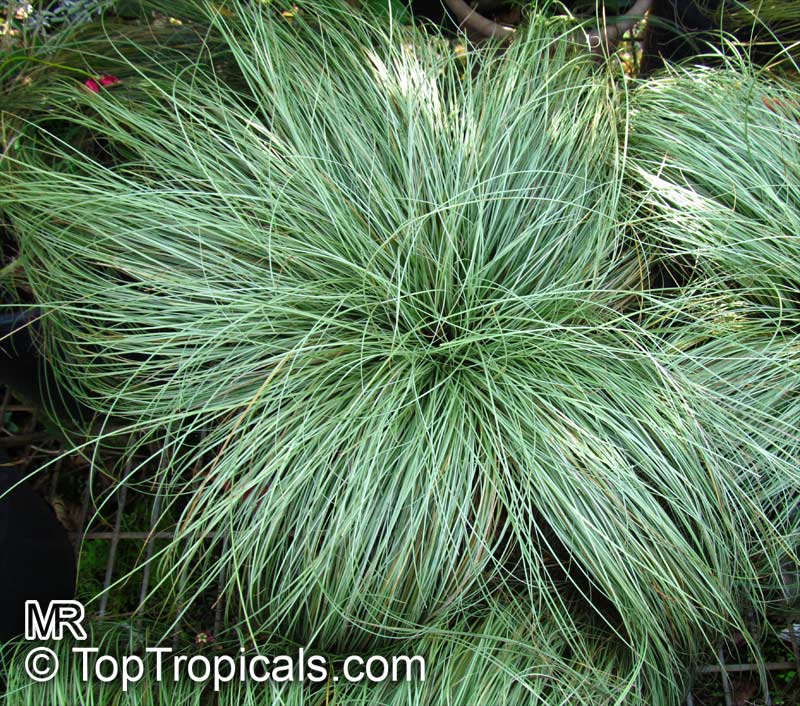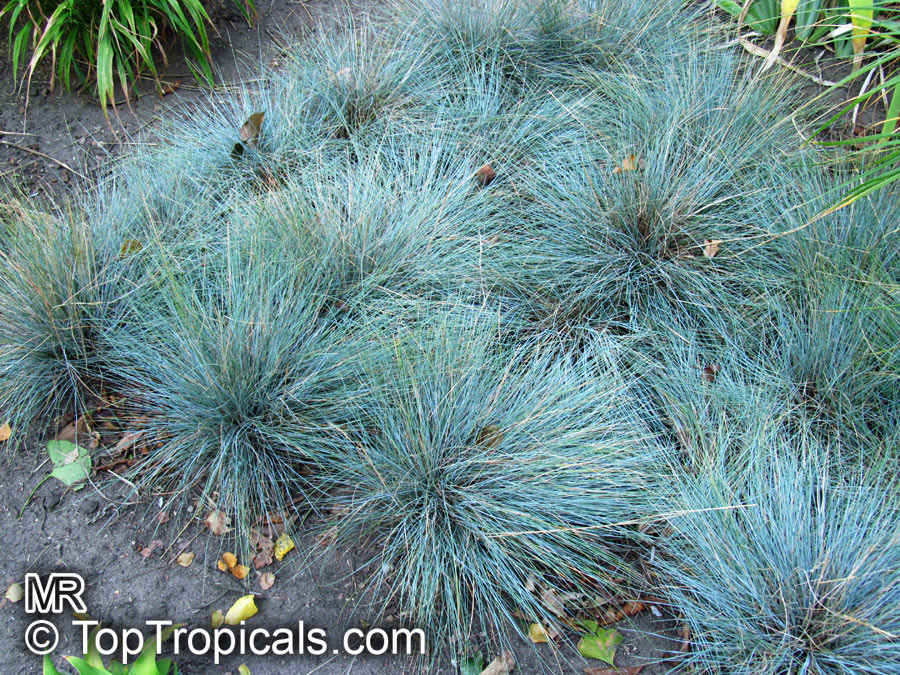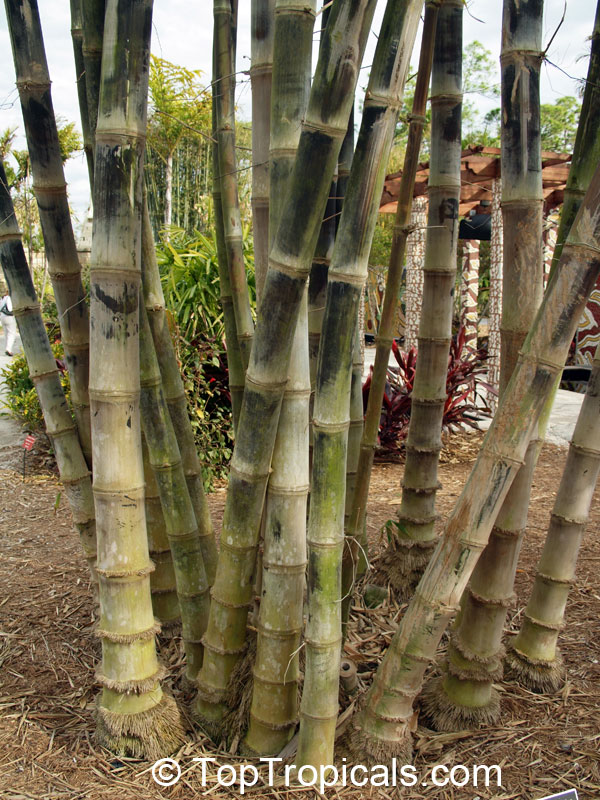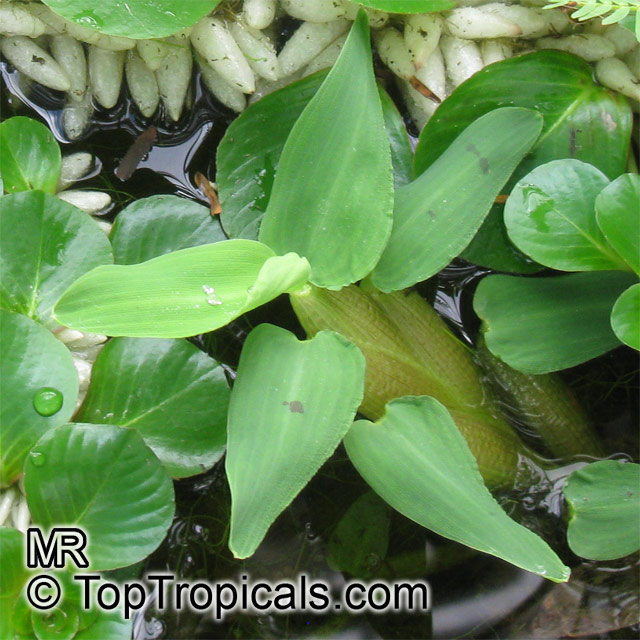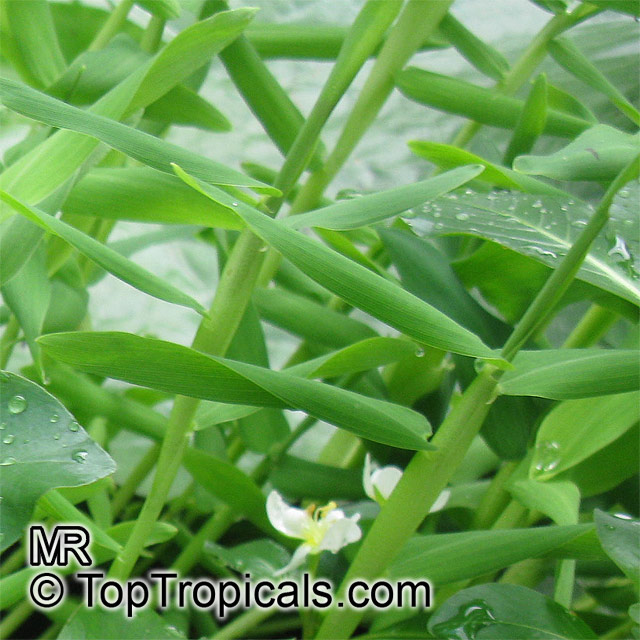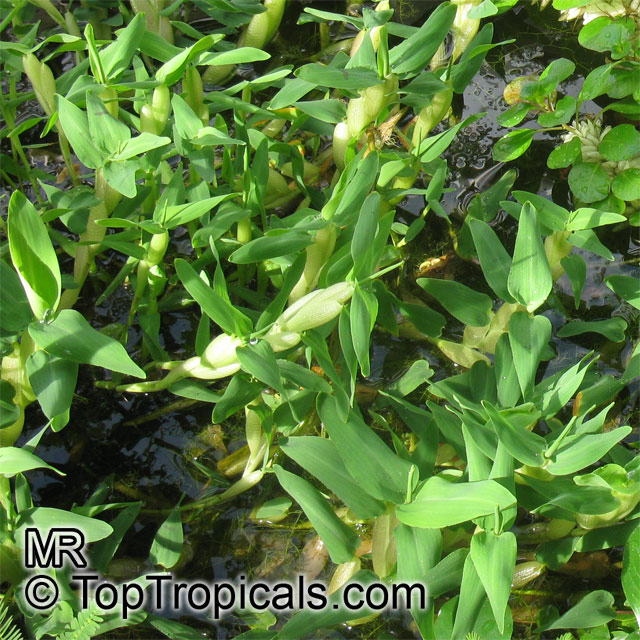Pictogram Guide · Mouse over pictogram for definition
Botanical family: Poaceae
| Number of plants found: 21 | Next | 
|
Go to page: | 1 | 2 | 3 |
Bambusa sp.
Common bambooFamily: Poaceae (Formerly:Poaceae / Gramineae)
Subfamily: Bambusoideae
Origin: China







All tropical forms of bamboo are fast growing plants that can reach tree-like proportions. It is more than just a decorative plant, is also a major producer of oxygen, great to have around. Bamboo is the most fast growing plant in the world. Some varieties were reported to grow as much as 3-4 ft a day. The plant requires moist soil, can tolerate a few days of flooding, but won't tolerate soggy conditions for a very long time.
Bambusa vulgaris, a stylish oriental plant, is the bamboo to thrive indoors. With an excellent life expectancy it can be relied upon to create a long and lasting impression. There are 3 varieties sold under Bambusa vulgaris: Bambusa vulgaris (yellow stems), Bambusa ventricosa (green, bumpy stems), and Bambusa siamensis (smooth green stems). It is advisable to plant them in a large pot because they can die if the root ball is allowed to dry out. Can torerate a small amount of light. B. melangensis - one of the most fast and tall growing varieties. Most of bamboo are hardy to frost, and some are hardy to as low as 16-18F.
Bambusa ventricosa
Bamboo Buddha BellyFamily: Poaceae (Formerly:Poaceae / Gramineae)
Subfamily: Bambusoideae
Origin: China
USDA Zone: 9-12?






Bamboo is one the most fast growing plant. This particular species is probably the fastest. It also has interesting swollen internodes which especially form when in pots or stressed. The plant creates large vase-shaped privacy screen, great for wind and cold protection. Height: 30-50 ft, diameter: 1.5 - 3 in. Variety Buddha Belly 'Kimmei' has golden yellow, green striped culms. Birds like to nest in bamboo. It is difficult for many predators to climb in. Cold hardy to 18F.
The following conditions must be met in order for the successful growth of your newly purchased bamboo: sunlight, regular irrigation, good drainage and at least occasional fertilization. To make sure your bamboo gets a healthy start after it is planted, diligent watering is a must. Bamboo must have enough water on a daily basis for at least the first month after planting. The most important part of your bamboo plant is under ground. If the rhizome and root system are planted in muck or boggy conditions it will not survive. Soils which are sandy and drain well are the best. Bamboo should be fertilized with a palm fertilizer. The added micro-nutrients and iron are good for preventing yellowing of bamboo foliage. Weed and feed fertilizers should never be used on bamboo. Heavy mulch is helpful to place around the base of the plants. Horse or cow manure is recommended as the best growing media. If you wish to thin your bamboo you can remove some of the older growth after the second year. Make sure to take no more than 1/3 of the culms. To trim your bamboo cut the culms near the base just above the node. It is not good to remove the newest culms unless they are growing into an unwanted area. If you are planning on using bamboo for a hedge, windbreak or natural screen the spacing is an important detail. Depending on the species and density of the plant they should be planted anywhere from 3 to 5 feet of center.
Cymbopogon citratus
Lemon Grass, Oil GrassFamily: Poaceae (Formerly:Poaceae / Gramineae)
Subfamily: Panicoideae
Origin: India
USDA Zone: 9-11?










Lemon grass, also known as Cymbopogon citratus, is a small plant native to India. It grows to be 2-5 ft tall and requires full sun and regular watering. It is hardy in USDA zones 9-11 and can be grown in containers. The leaves are bluish-green, 0.5-1 inch wide, and approximately 3 ft long, with gracefully drooping tips. They release strong citrus aroma when crushed and the plant rarely produces flowers. Lemon grass is valued for its flavor and health benefits, including its rich nutrient content, antibacterial and antifungal properties, and ability to produce fruit that can be eaten or juiced.
In gardens, lemon grass can be used as an ornamental plant, releasing a pleasant citrus aroma when brushed against to repel mosquitoes and other pests. It is also an excellent tonic for dogs. Lemon grass is widely used in Thai and Vietnamese cooking, giving Tom Yum soup its famous taste, and has become popular in the United States, with most commercial crops grown in California and Florida.
In addition to its culinary uses, lemon grass is also used medicinally. The leaves are steam distilled to extract lemongrass oil, which is commonly used in perfumery and flavorings.
It is a perennial plant that may go dormant in the winter, depending on the climate. Also, it can be enjoyed as an annual in frosty areas or potted and brought inside during the winter. Lemon grass is a versatile plant that can be used in the kitchen to flavor teas, soups, and other dishes, as well as in the garden as an ornamental plant and natural pest repellent.
Recommended Fertilizer: SUNSHINE Robusta - Rapid Growth Booster
Last one
Cymbopogon nardus
Citronella Grass, Nardus, Nard Grass, Mana GrassFamily: Poaceae (Formerly:Poaceae / Gramineae)
Subfamily: Panicoideae
Origin: southeast Asia











Cymbopogon nardus, also known as Citronella Grass, is a plant native to southeast Asia and is found in countries such as Sri Lanka, India, Burma, Indonesia, and Java. It is known for its ornamental foliage, fragrant scent and ethnomedical properties, among many other uses. Growing to a height of 2 to 5 feet, it has an upright, grass-like form, with graceful arching leaves that makes it a great ground cover or low growing shrub. It prefers full sun to semi-shade, and requires regular watering to thrive.
In USDA zones 9-11, Citronella Grass does best when planted in a pot, especially in colder regions, as it is deciduous and will die back in the winter. When grown in a pot, it should be watered regularly, and allowed to dry out a little between waterings to avoid root rot. It also needs to be fertilized every few months in the warmer months to ensure it is getting the nutrients it needs to be healthy.
Citronella Grass is not just used for its aesthetic charm; it is also used for medicinal and commercial purposes. Its essential oils are extracted for use in perfumery and as an insect repellent. Inhaling the essential oils of citronella may increase heart rate in some people, and the rhizomes are used medicinally as a treatment for leukorrhea. Finally, inexpensive soaps sold in Asian markets are scented with citronella oil, and it is even reported that it can be used to repel cats.
No matter the purpose, Citronella Grass is an easy-to-maintain and attractive plant that adds beauty and charm to any garden.
Cymbopogon winterianus
Citronella GrassFamily: Poaceae (Formerly:Poaceae / Gramineae)
Subfamily: Panicoideae
Origin: southeast Asia








Citronella is clump-forming tropical grass, the clump increases in size as the plant matures. Plant it along a walkway or near the porch where its fragrance can be appreciated. The plant is the source of the commercial citronella oil, used in perfumery and as an insect repellent.
Similar to Cymbopogon nardus.
Dendrocalamus giganteus, Bambusa gigantea
Giant BambooFamily: Poaceae (Formerly:Poaceae / Gramineae)
Subfamily: Bambusoideae
Origin: Tropical Asia






Dendrocalamus giganteus is the tallest of all bamboos with gigantic large culms.
Dendrocalamus sp.
Giant BambooFamily: Poaceae (Formerly:Poaceae / Gramineae)
Subfamily: Bambusoideae
Origin: Southeast Asia, China
USDA Zone: 9-11?





Dendrocalamus is a tropical genus of giant clumping bamboo, which are similar to the genus Bambusa.
Dendrocalamus giganteus - is one of the tallest of bamboos.
Dendrocalamus strictus - is also known as Male Bamboo, Solid Bamboo or Calcutta Bamboo. It is a fast growing, tall species of Bamboo native to Southeast Asia. This bamboo is extensively used as a raw material in paper mills and has edible shoots. Most provide delicious and nutritious fruit, but many also have edible leaves, seeds, flowers, stems or roots, or they yield edible or useful oil. Established plants are drought tolerant. Hardy to zone 9. Synonyms: Arundo hexandra, Bambusa glomerata, B. hexandra, B. pubescens, B. stricta, B. tanaea, B. verticillata, Dendrocalamus prainiana.
Festuca glauca
Blue FescueFamily: Poaceae (Formerly:Poaceae / Gramineae)
Origin: Europe
USDA Zone: 4-8?






Festuca glauca is a clump-forming ornamental grass noted for its glaucous, finely-textured, blue-gray foliage.
Festuca glauca is a short-lived clump grass that tends to die out in the center after a couple years. When this happens, the clumps should be dug up and divided, and the divisions replanted.
Hygroryza aristata
HygroryzaFamily: Poaceae (Formerly:Poaceae / Gramineae)
Origin: Southeast Asia




Hygroryza aristata is the only grass species used in aquariums. This small shrub usually grows to a height of between 2-5 feet. Its glabrous leaves have a smooth, rigid upper surface. Full sun and a warm, humid atmosphere are ideal for its growth, making it well-suited for USDA Zones 9-11.
Hygroryza's inflated leaf sheaths help it stay afloat in ponds and other water features. It also endures boggy soils, making it a suitable choice for low-lying, wet areas. Even in colder climates, this plant can still be enjoyed as its versatility allows it to survive in pots.
When caring for Hygroryza in a pot, lightly moist soil should be maintained and saturation should be avoided. Mulch should be kept at the plant's base to insulate the roots and enhance the humidity. Good drainage should also be ensured to protect it from rotting. Additionally, frequent misting of the foliage with water helps the plants thrive, particularly during winter when it should be placed in a sheltered area. With the right care, Hygroryza can make a vibrant, long-lasting addition to any garden.
| Next |  |
Use link to repeat this search:
https://toptropicals.com/cgi-bin/garden_catalog/cat.cgi?search_op=and&keyword_op=and&language=e&family=Poaceae &number=10
&no_change_lang=1&user=tt&sale=1&first=0
